Instructions for Side by Side Printing
- Print the notecards
- Fold each page in half along the solid vertical line
- Cut out the notecards by cutting along each horizontal dotted line
- Optional: Glue, tape or staple the ends of each notecard together
The Skull
front 1 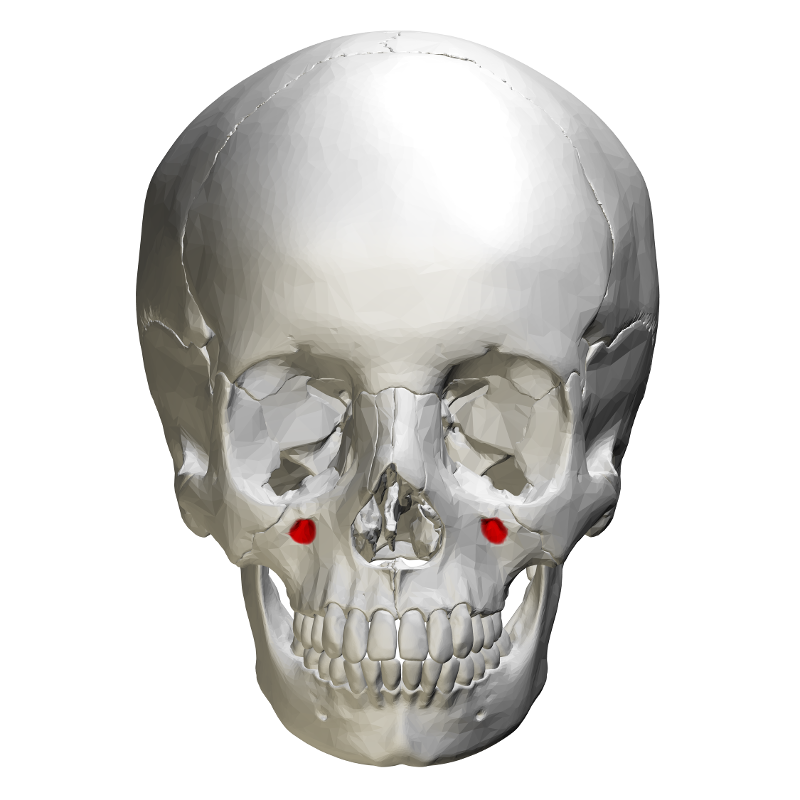 identify this. what nerve passes through here? | back 1 infraorbital nerve (small sensory branch of V2, maxillary division of trigeminal nerve) |
front 2 which foramen are associated with the sphenoid bone? | back 2 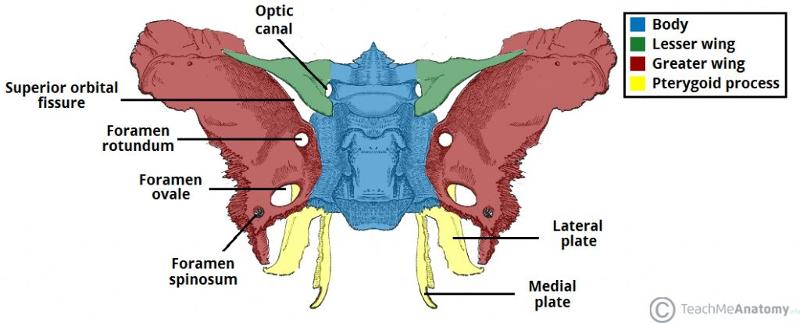 ovale, spinosum, rotundum, optic canal and superior orbital fissure |
front 3 What is the mneumonic to remember cranial nerves? | back 3 Oh! Oh! Oh! to touch and feel very good velvet. Ah, heavenly. |
front 4 name the bones of the bony orbit (7) | back 4 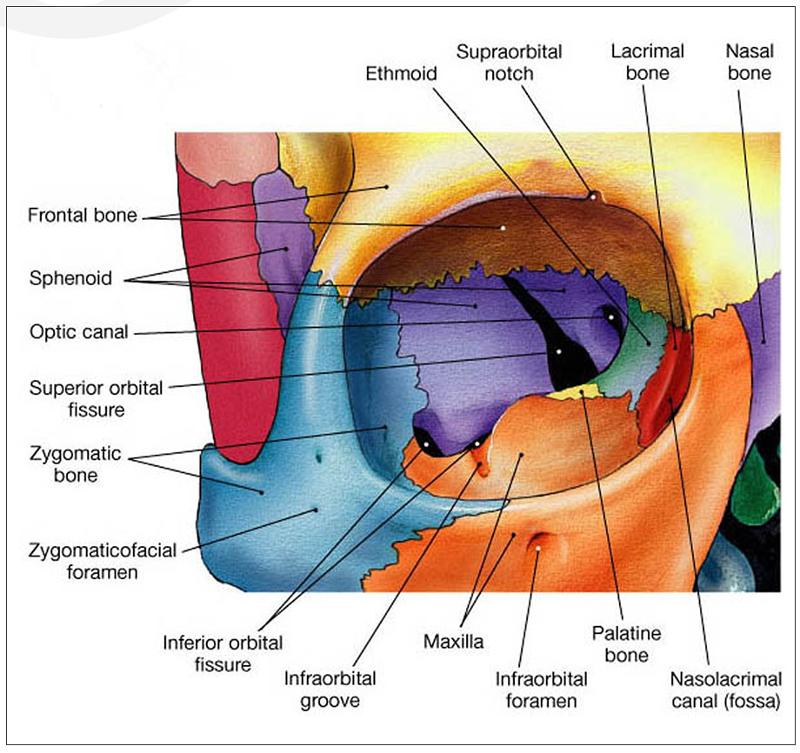 frontal, lacrimal, ethmoid, zygomatic, maxilla, palatine, sphenoid know lacrimal groove |
front 5 what is the mneumonic to help with remembering if cranial nerves are sensory, motor or both? | back 5 some say money matters but my brother says big brains matter most |
front 6 name the twelve cranial nerves along with each type (sensory, motor or both) | back 6 olfactory sensory optic sensory oculomotor motor trochlear motor trigeminal both v1 opthalmic sensory v2 maxillary sensory v3 mandibular both abducens motor facial both vestibulocochlear sensory glossopharyngeal both vagus both accessory motor hypoglossal motor |
front 7 name each cranial nerve and the foramen through which it enters the skull | back 7 olfactory cribiform foramina in cribiform plate optic optic canal (foramen) oculomotor superior orbital fissure trochlear superior orbital fissure trigeminal jugular foramen v1 opthalmic superior orbital fissure v2 maxillary foramen rotundum v3 mandibular foramen ovale abducens superior orbital fissure facial internal acoustic meatus, through facial canal, exists at stylomastoid foramen vestibulocochlear internal acoustic meatus glossopharyngeal jugular foramen vagus jugular foramen accessory jugular foramen hypoglossal hypoglossal canal |
front 8 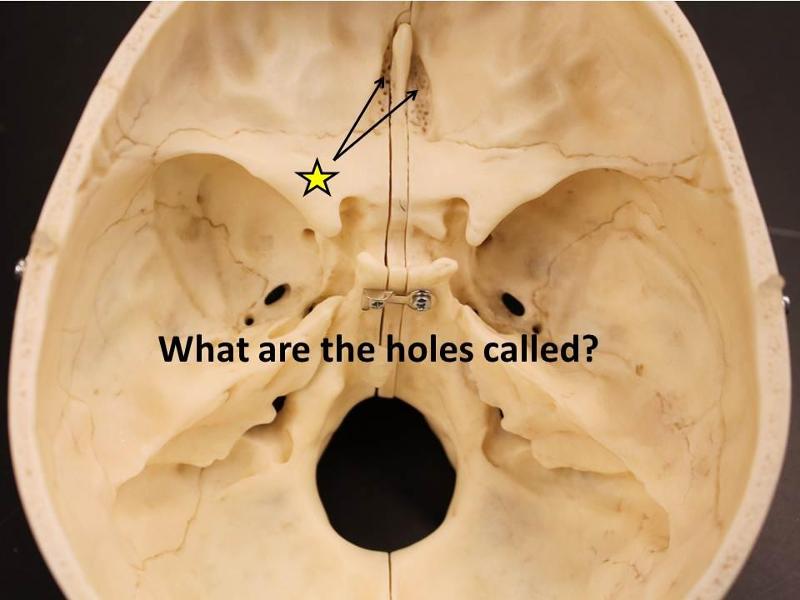 What goes through these holes? | back 8 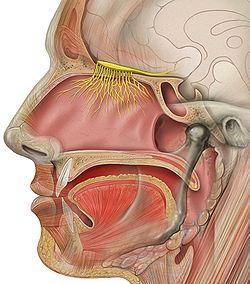 olfactory nerve; cribiform foramina |
front 9 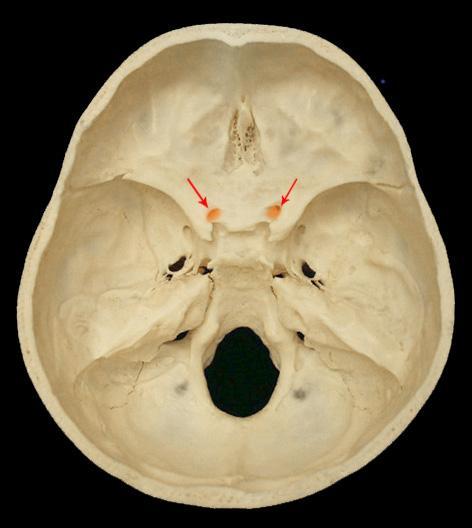 what is this? what passes through here? (two things) | back 9  optic canal/foramen; optic nerve and opthalmic artery |
front 10 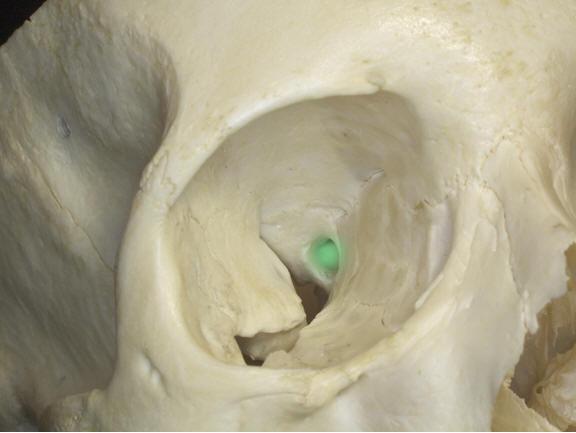 what is this? what passes through here? | back 10 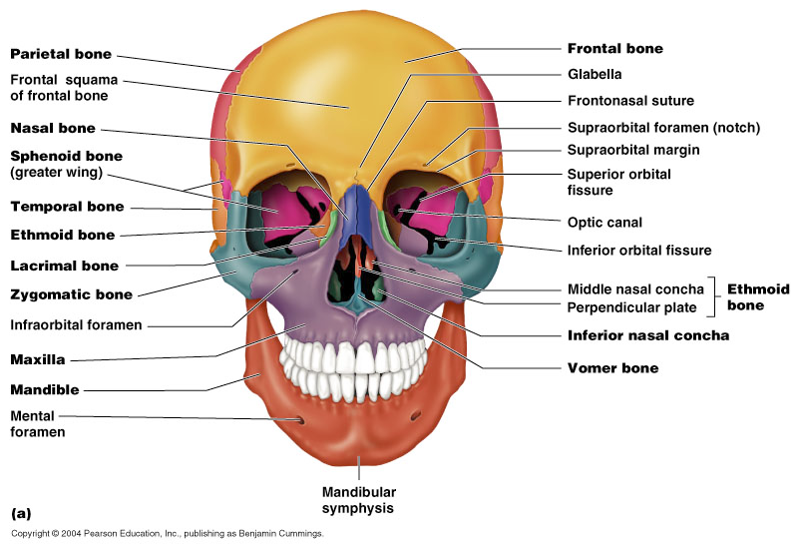 optic canal; optic nerve and opthalmic artery |
front 11 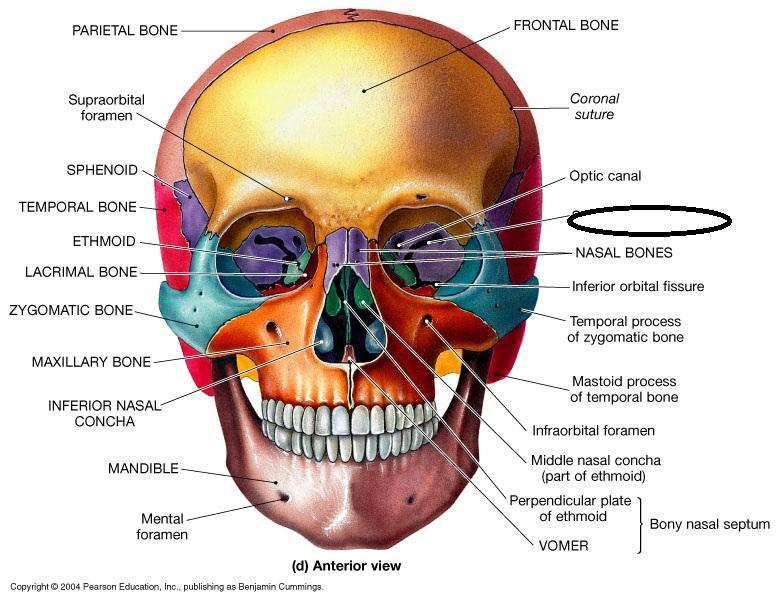 what is the blank? which nerves pass through here? which vein passes through here? | back 11 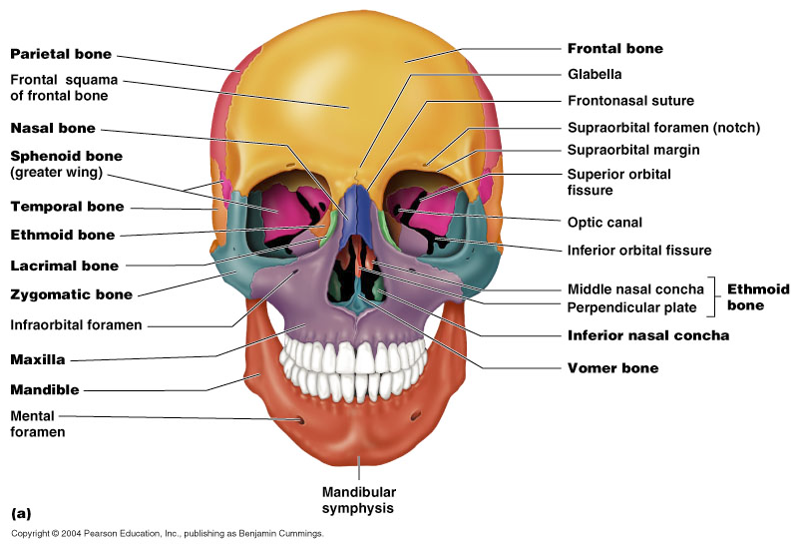 superior orbital fissure; oculomotor, trochlear, opthalmic division of the trigeminal nerve, and abducens nerve opthalmic vein |
front 12 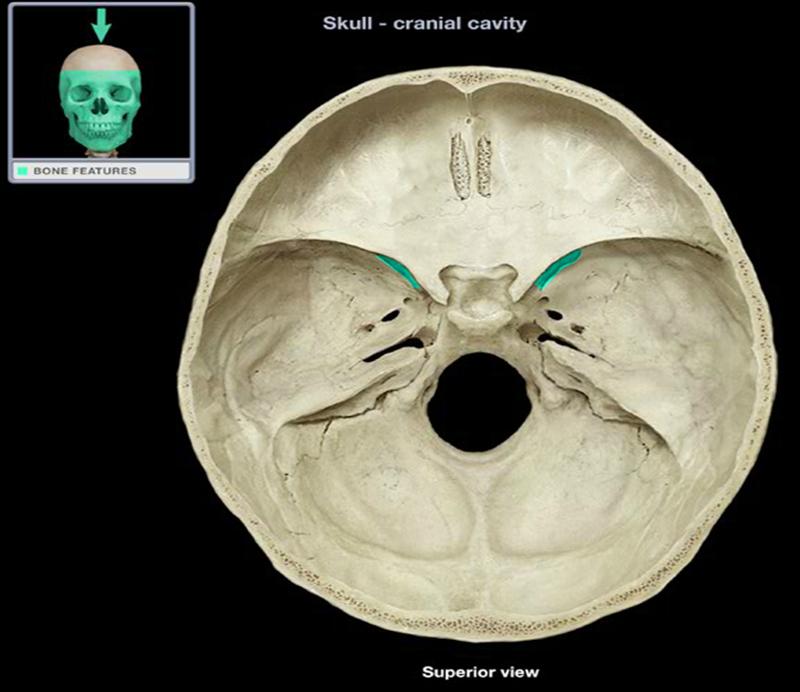 what is the blank? which nerves pass through here? which vein passes through here? | back 12 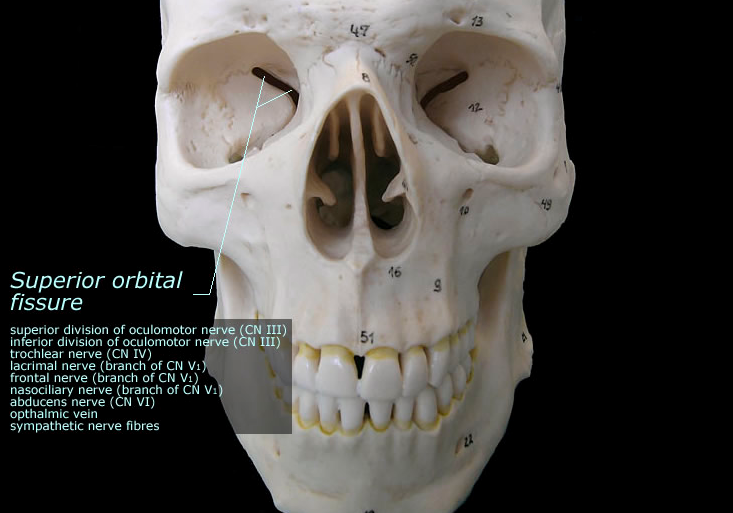 superior orbital fissure; oculomotor, trochlear, opthalmic division of the trigeminal nerve, and abducens nerve opthlamic vein |
front 13 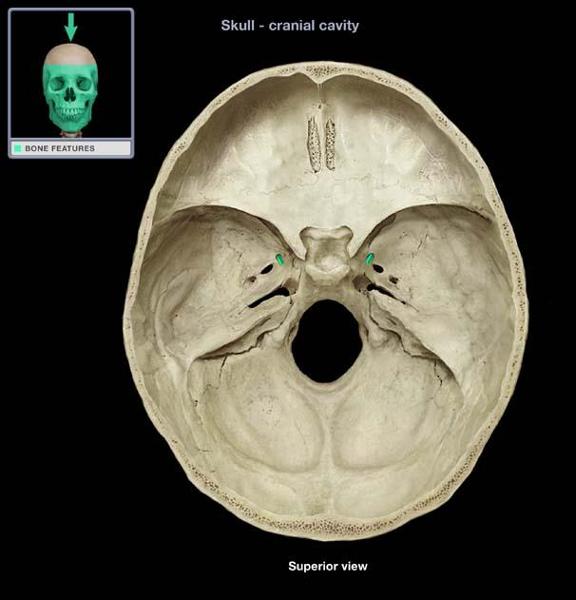 what is this? what nervepasses here? | back 13 foramen rotundum; maxillary division of trigeminal nerve |
front 14 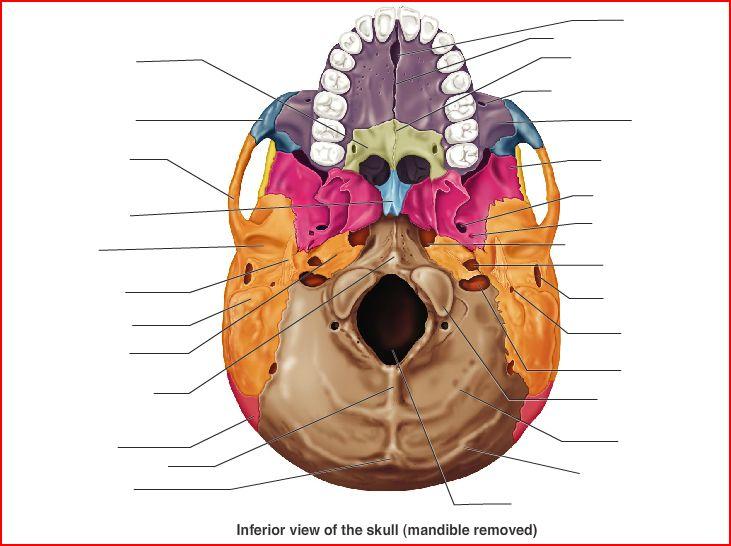 label these | back 14 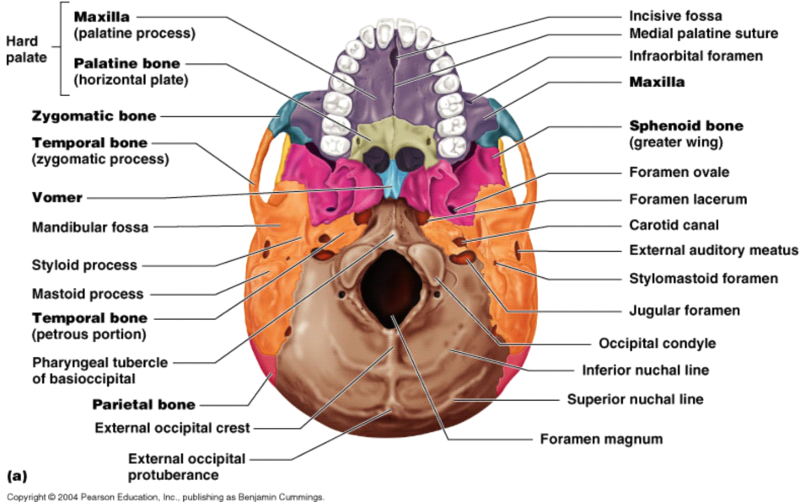 |
front 15 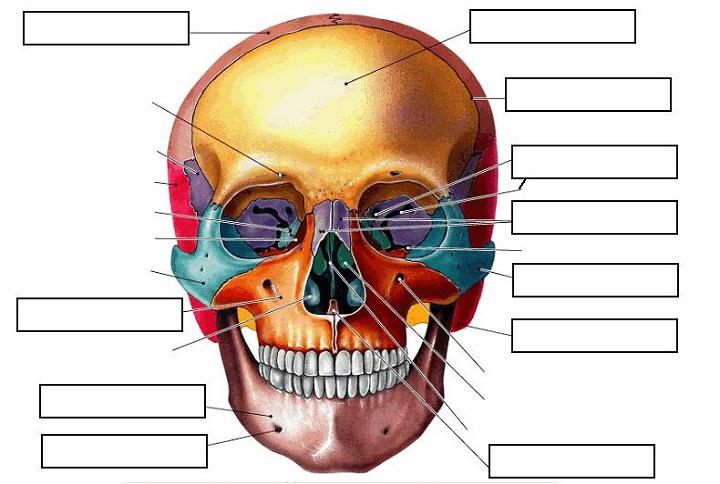 label this | back 15 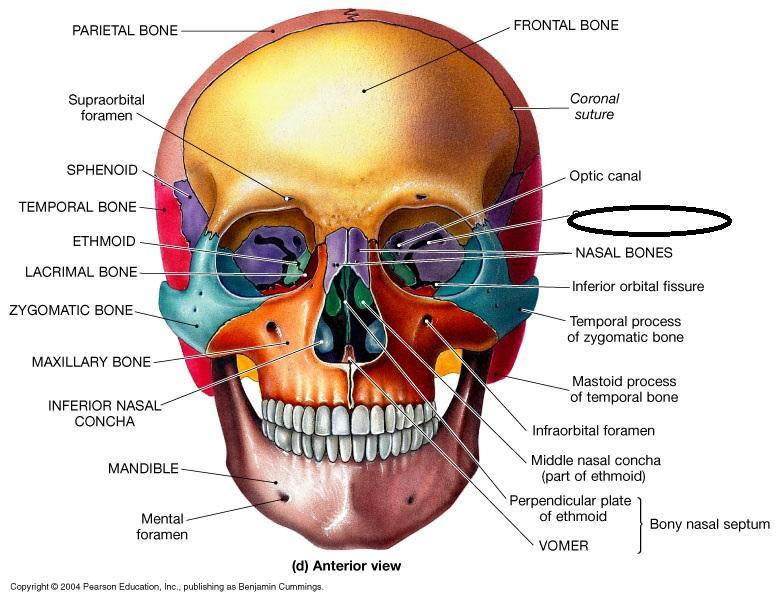 |
front 16 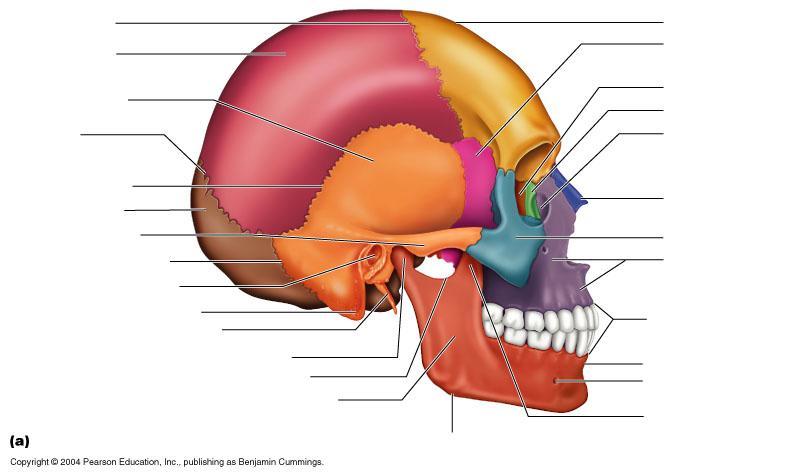 label this | back 16 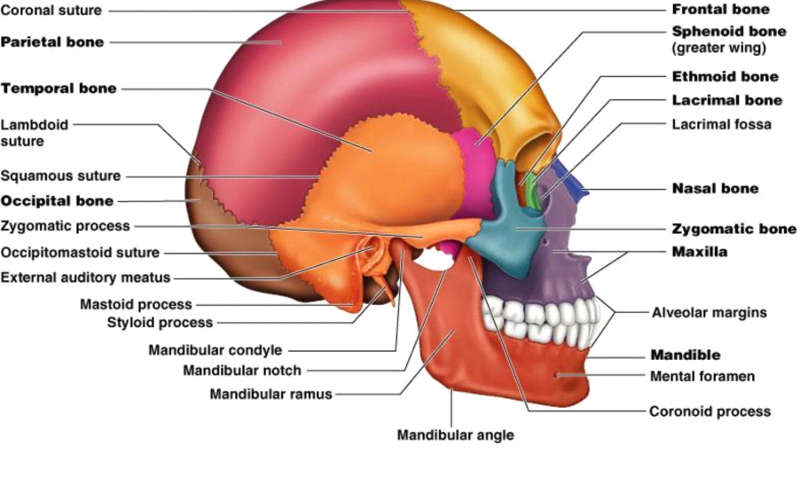 |
front 17 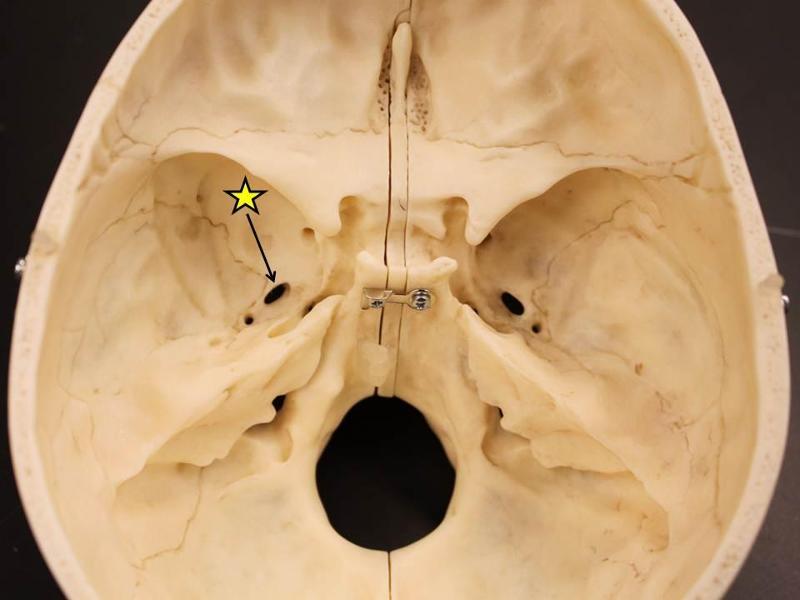 what is this? which nerves pass through here? | back 17 foramen ovale; mandibular division of the trigeminal nerve |
front 18 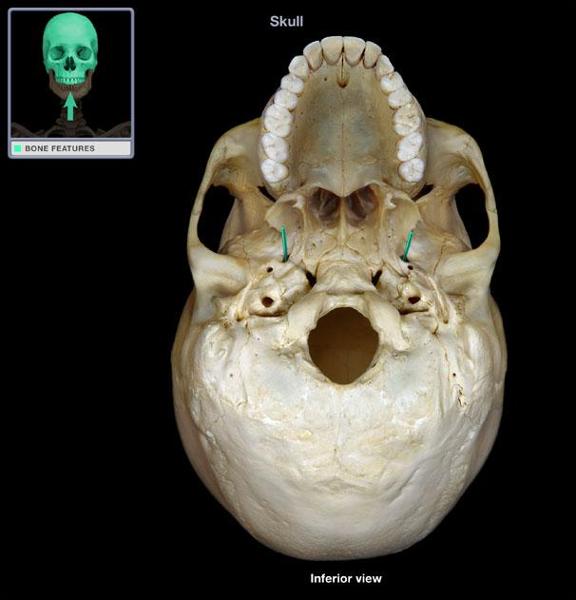 what is this? which nerves pass through here? | back 18 foramen ovale; mandibular division of the trigeminal nerve |
front 19  what is this? which nerve passes here? | back 19 internal acoustic meatus; facial nerve (VII) and vestibulocochlear nerve (VIII) |
front 20 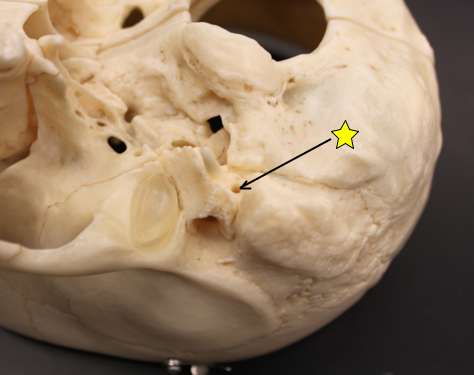 what is this? what nerve passes through here? | back 20 stylomastoid foramen; facial nerve |
front 21 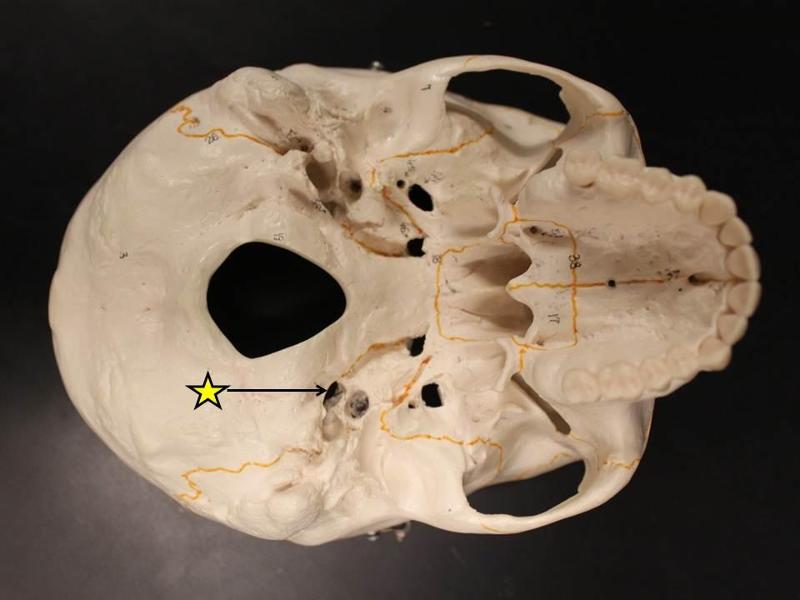 what is this? what nerves passes through here? | back 21 jugular foramen; glossopharyngeal (IX), vagus (X), accessory (XI) |
front 22 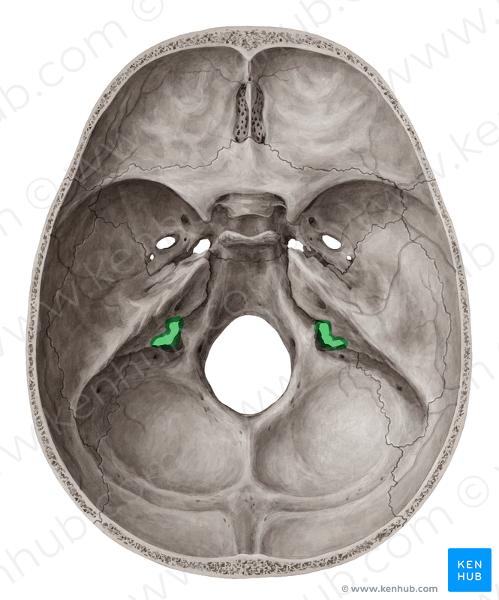 what is this? what passes through here? | back 22 jugular foramen; glossopharyngeal (IX), vagus (X), accessory (XI) and internal jugular vein |
front 23 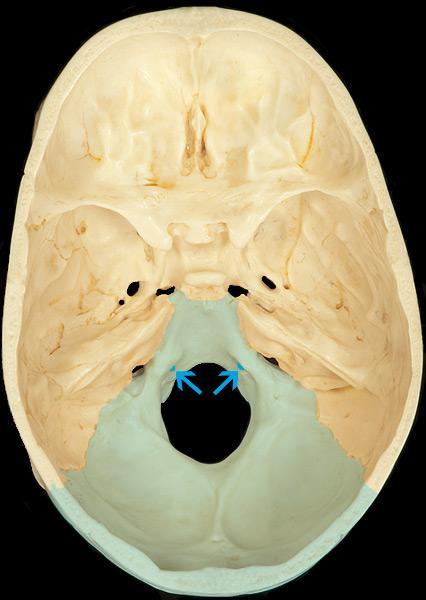 what is this? what nerves passes through here? | back 23 hypoglossal canal; hypoglossal nerve (XII) |
front 24 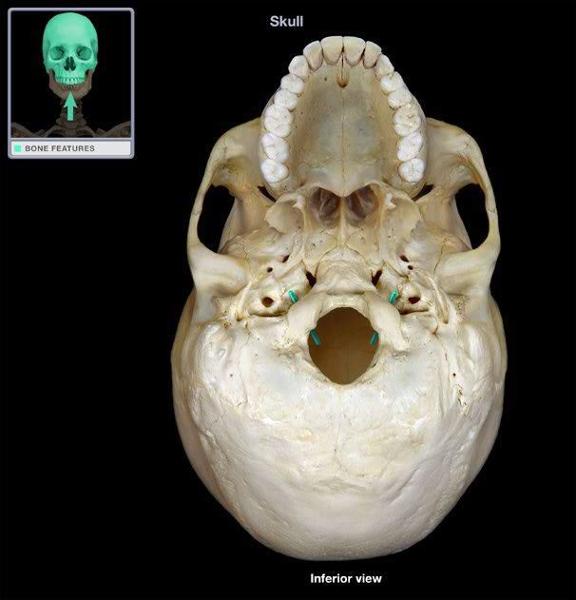 what is this? what nerves passes through here? | back 24 hypoglossal canal; hypoglossal nerve (XII) |
front 25 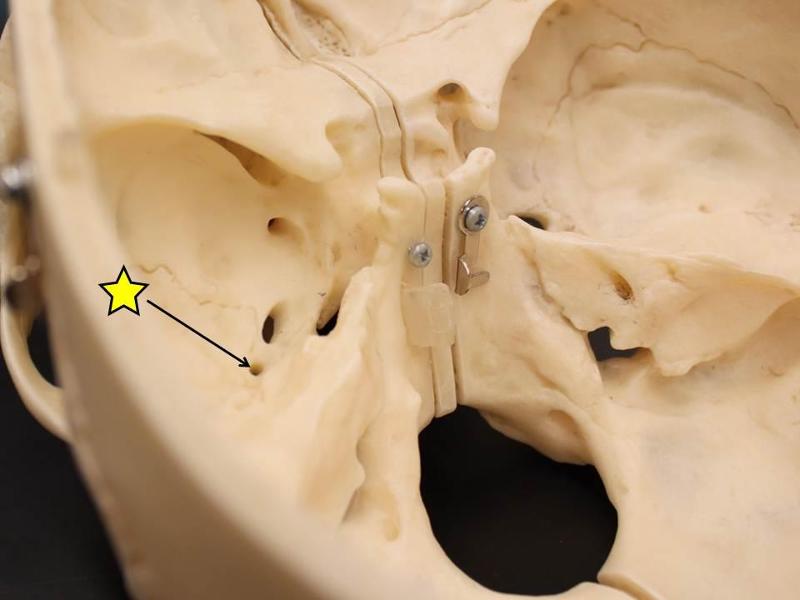 what is this? what passes through here? | back 25 middle meningeal artery; foramen spinosum |
front 26 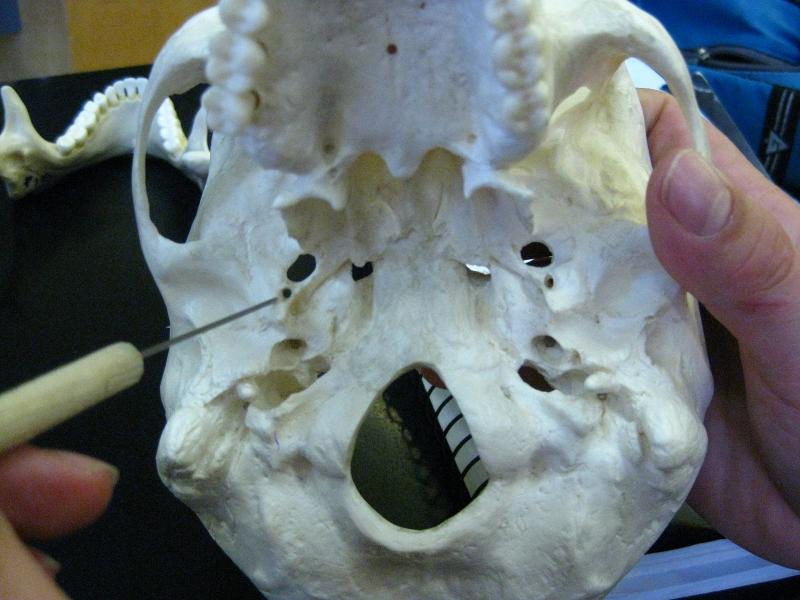 what is this? what passes through here? | back 26 middle meningeal artery; foramen spinosum |
front 27 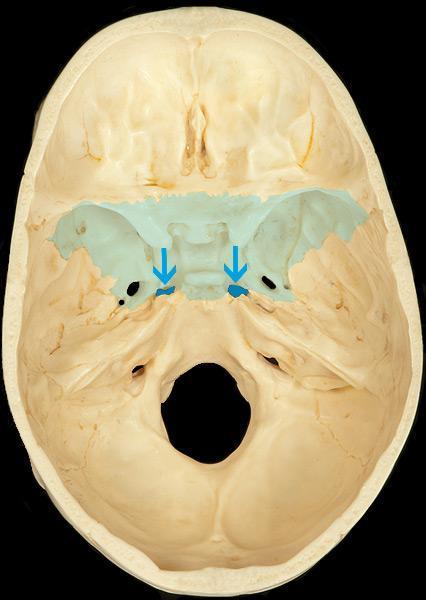 what is this? what passes through here? | back 27 foramen lacerum; nothing, it is filled with cartilage after birth |
front 28 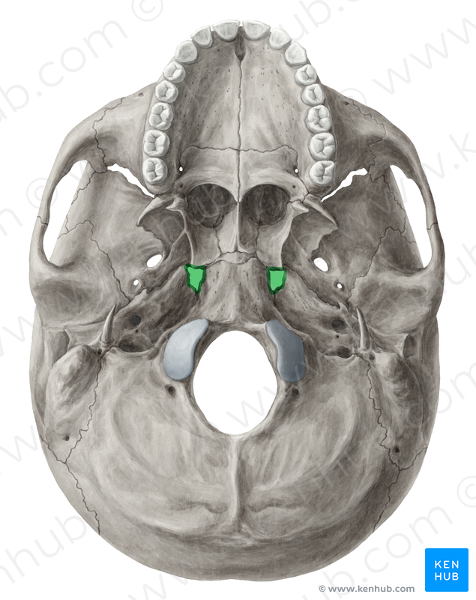 what is this? what passes through here? | back 28 foramen lacerum; nothing it is filled with cartilage after birth |
front 29 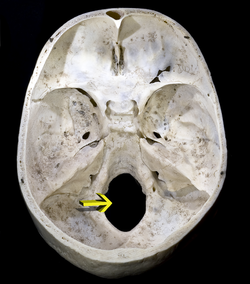 what is this? what passes through here? | back 29 foramen magnum; vertebral arteries and spinal cord |
front 30 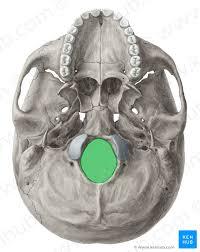 what is this? what passes through here? | back 30 foramen magnum; vertebral arteries and spinal cord |
front 31 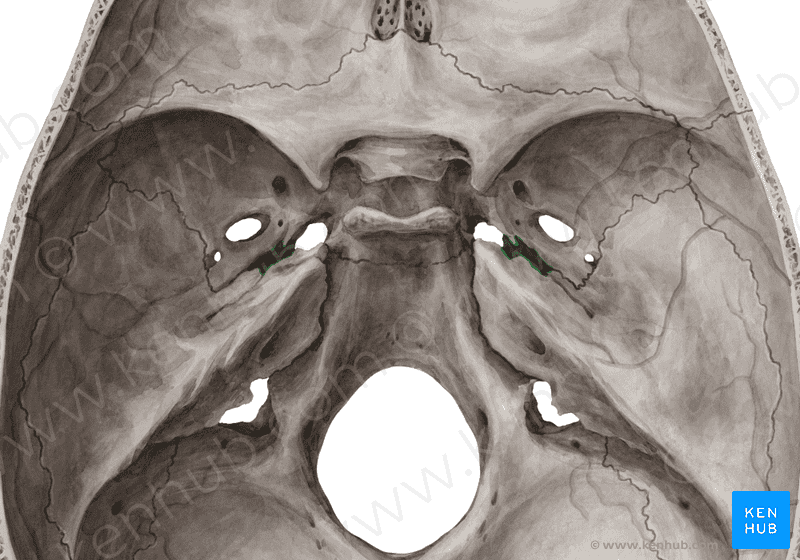 what is this? what passes through here? | back 31 carotid canal; internal carotid artery |
front 32 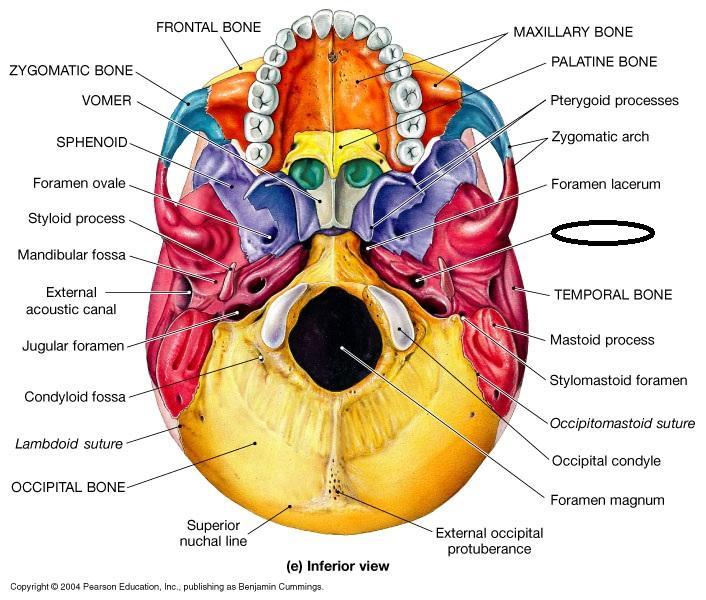 what is this? what passes through here? | back 32 carotid canal; internal carotid artery |
front 33 how many bones make up the skull? How many form the braincase and how many form the face? | back 33 22; braincase 8 14 face |
front 34 what are the seven associated bones of the skull> | back 34 six are auditory ossicles enclosed in the temporal bones and one is the hyoid bone |
front 35 what eight bones make up the cranium? | back 35 occipital bone, parietal bone, frontal bone, right and left temporal bones, sphenoid, and ethmoid |
front 36 what 14 bones make up the face? | back 36 2 maxillae, 2 palatine bones, 2 nasal bones, 2 inferior nasal conchae, 2 zygomatic bones, 2 lacrimal bones, vomer, and mandible |
front 37 which suture is found between the two parietal bones and the occipital bone | back 37 lambdoidal sture |
front 38 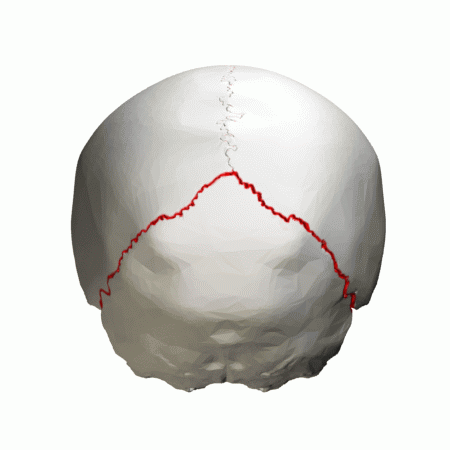 what is this? | back 38 lambdoidal suture |
front 39 which suture is located along the midsagittal plane? | back 39 sagittal suture |
front 40 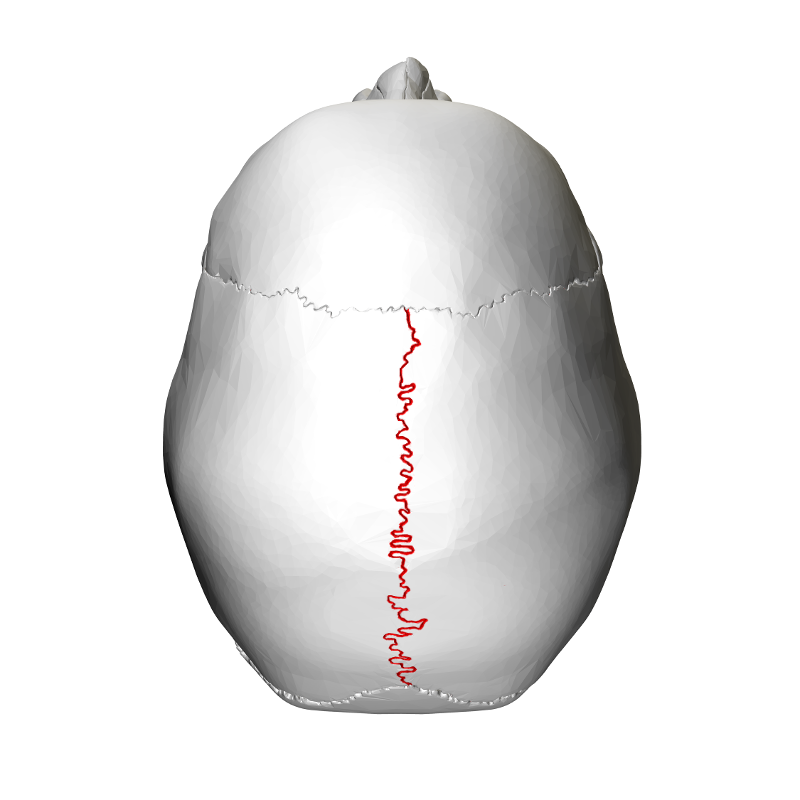 what is this? | back 40 sagittal suture |
front 41 which nerve provides sensation for forehead? | back 41 supraorbital nerve from opthalmic branch of trigeminal nerve |
front 42 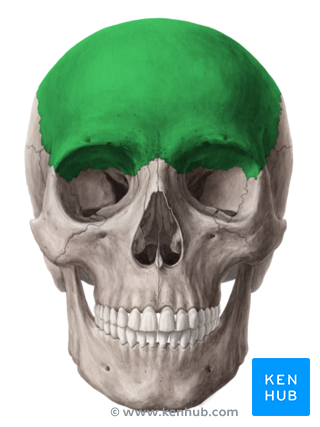 what bone is this? | back 42 frontal bone |
front 43 which bone forms root/superior aspect of bony orbit? | back 43 frontal bone |
front 44 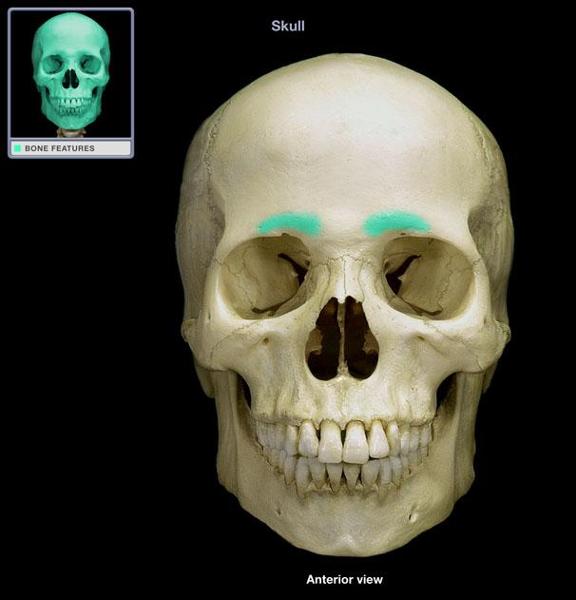 what is this? | back 44 superciliary arch (of the frontal bone) |
front 45 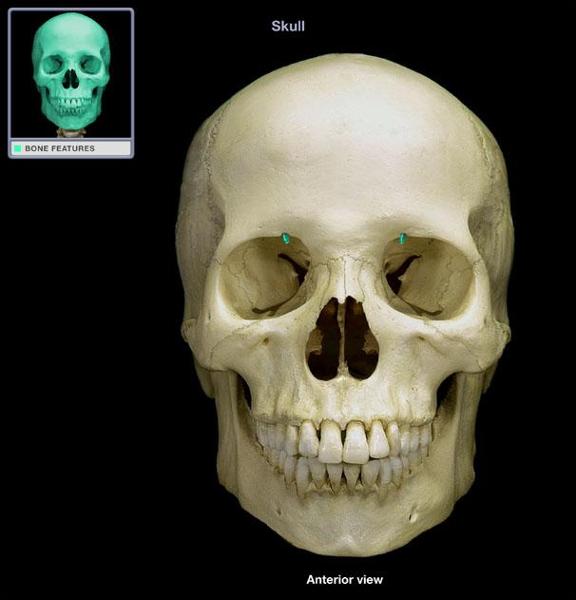 what is this? | back 45 supraorbital notch/foramen |
front 46 which muscle originates on superior and inferior temporal lines? | back 46 temporalis muscle |
front 47 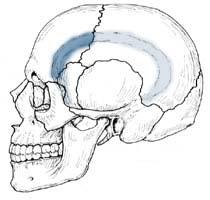 what are these? | back 47 superior and inferior temporal line |
front 48 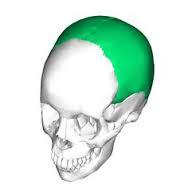 what is this? | back 48 parietal bone |
front 49 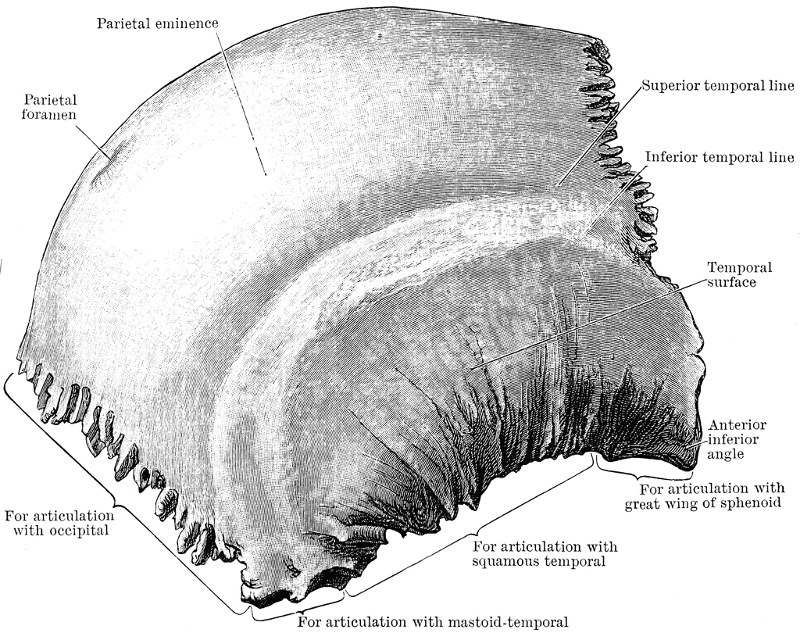 what is this? | back 49 parietal bone |
front 50 ____________ are two bones in the human skull which, when joined together at a fibrous joint, form the sides and roof of the cranium. | back 50 parietal bones |
front 51 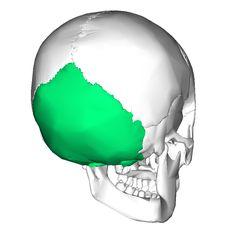 what is this? | back 51 occipital bone |
front 52 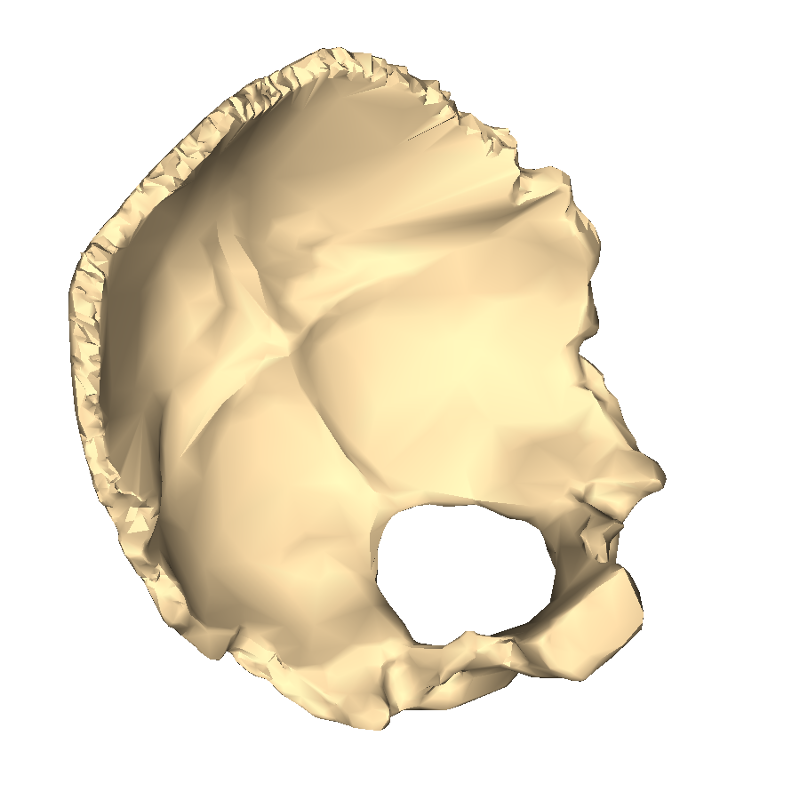 what is this? | back 52 occipital bone |
front 53 the ______ articulate with the _______ to perform the nodding motion of the head | back 53 occipital condyles; C1 |
front 54 which muscle originates on the external occipital protuberance? | back 54 trapezius |
front 55 vertebral arteries pass through the ________ to form the posterior circulation of the brain | back 55 transverse foramen |
front 56 What forms the skull to jaw joint? say features and bones | back 56 mandibular fossa of the temporal bone and condylar process of the mandible |
front 57  label the greys | back 57 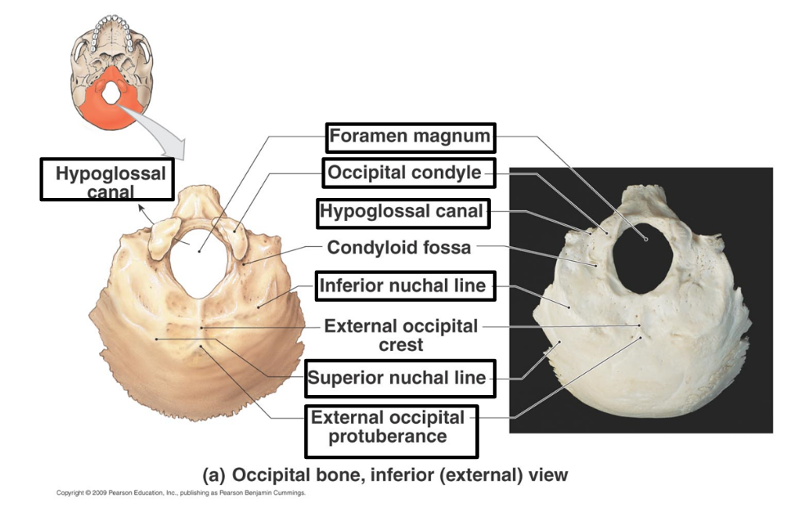 |
front 58 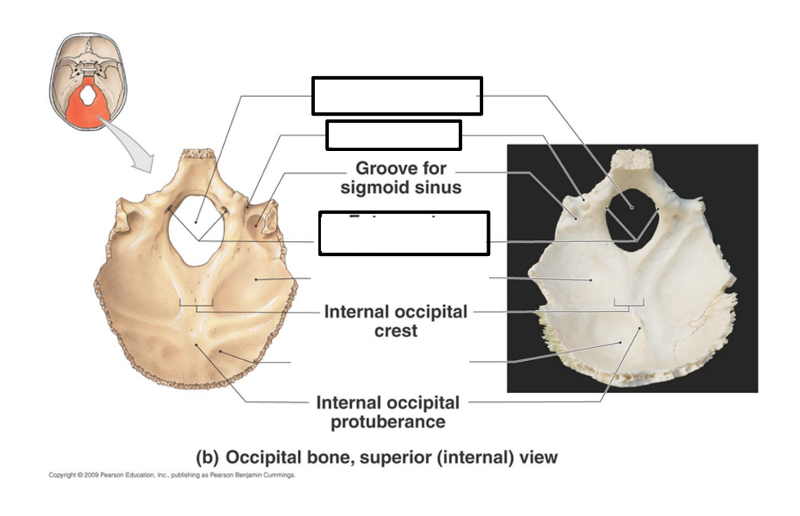 | back 58 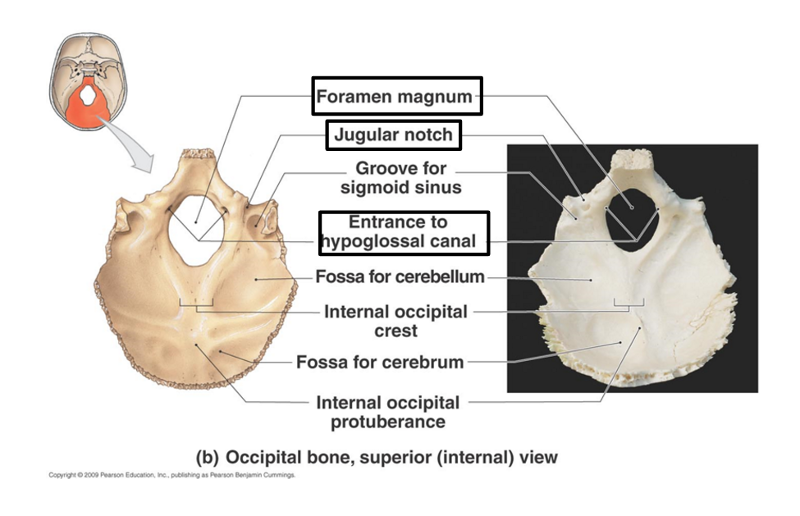 |
front 59 what forms the zygomatic process? which part is most anterior? | back 59 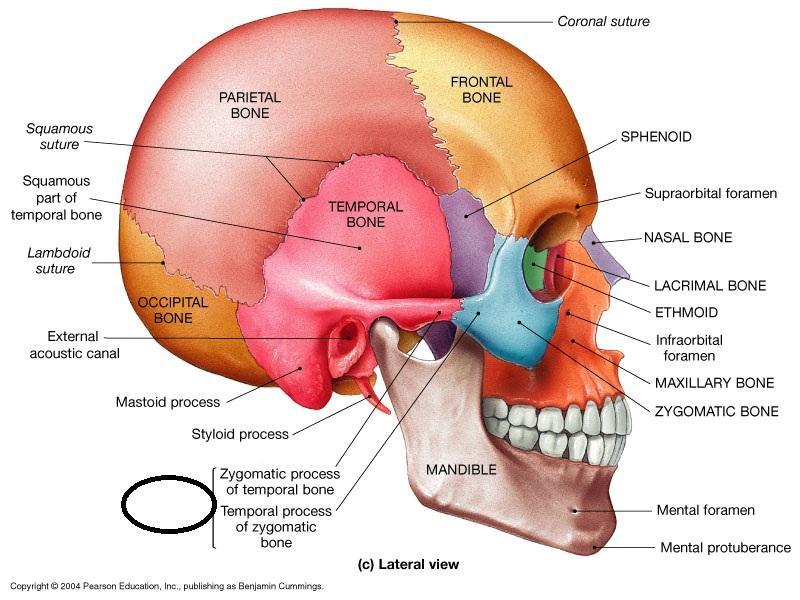 the zygomatic process of the temporal bone and temporal process of zygomatic bone; temporal process of zygomatic bone |
front 60 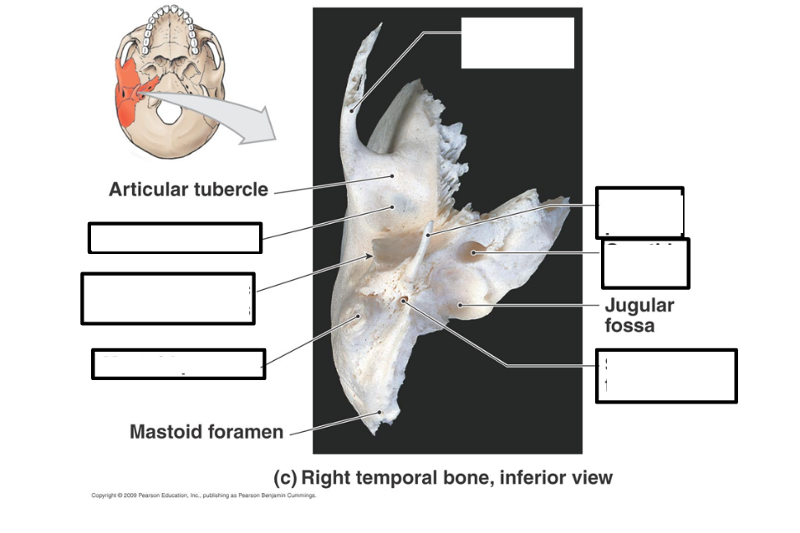 label the greys | back 60 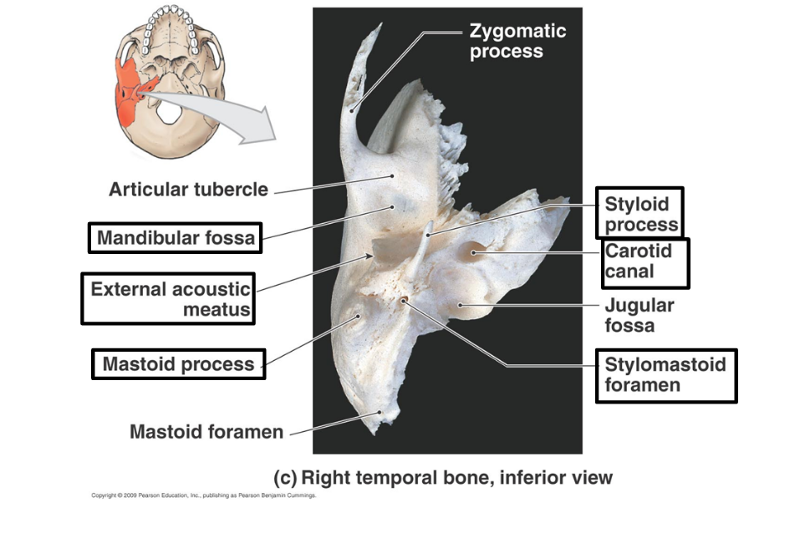 |
front 61 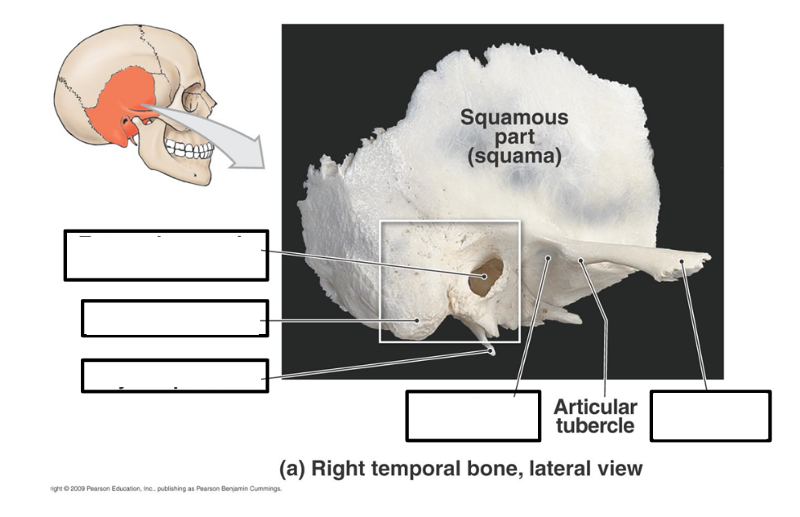 label the greys | back 61 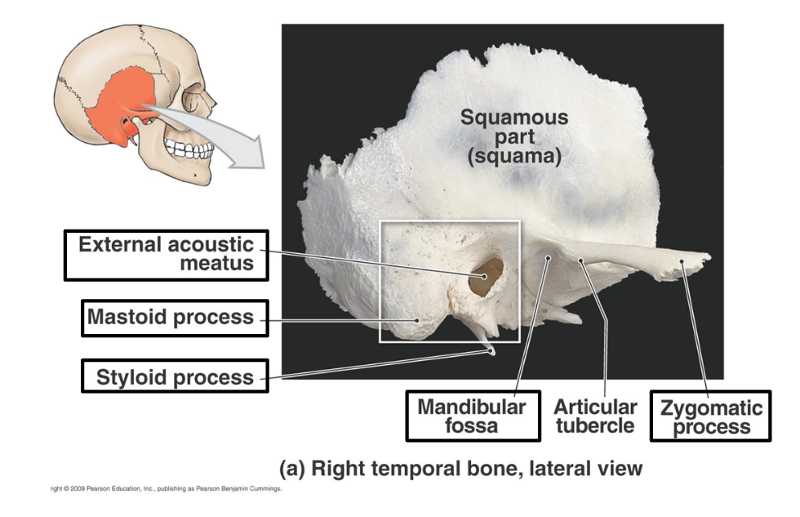 |
front 62 what are the paired and unpaired bones of the cranium? | back 62 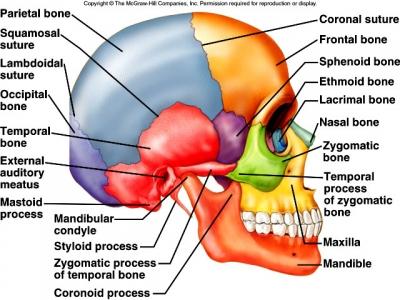 unpaired: frontal, occipital, sphenoid, ethmoid paired: temporal, parietal |
front 63 what composes the calvaria? | back 63 frontal bone, parietal bones, occipital bone |
front 64 what are the four major sutures of the skull? | back 64 coronal, squamosal, lambdoidal, and sagittal |
front 65 what type of joint is found between bones of the skull? | back 65 fibrous joints - sutures |
front 66 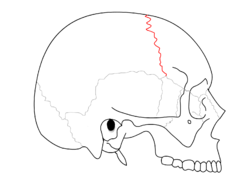 which suture is in red? | back 66 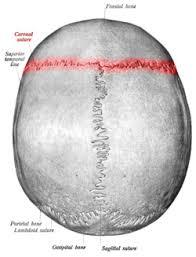 coronal suture |
front 67 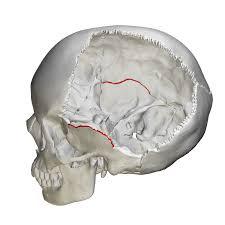 which suture is in red? | back 67 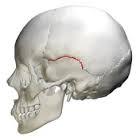 squamosal suture |
front 68 what forms the ptergoid process? | back 68 the lateral and medial plates of the sphenoid bone |
front 69 in which part of the temporal bone are structures of hearing found? | back 69 petrous part |
front 70 what sits in the sella turcica? in which bone is the sella turcica found? | back 70 the ptuitary gland; sphenoid bone |
front 71 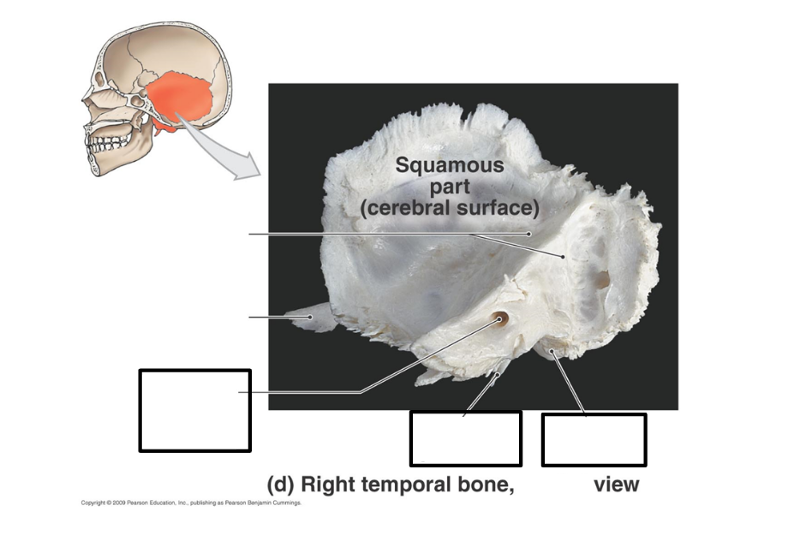 label the greys | back 71 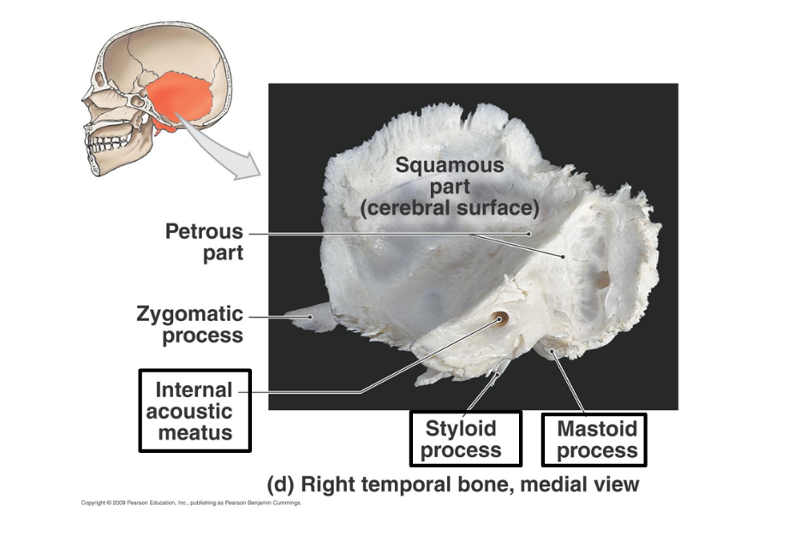 |
front 72 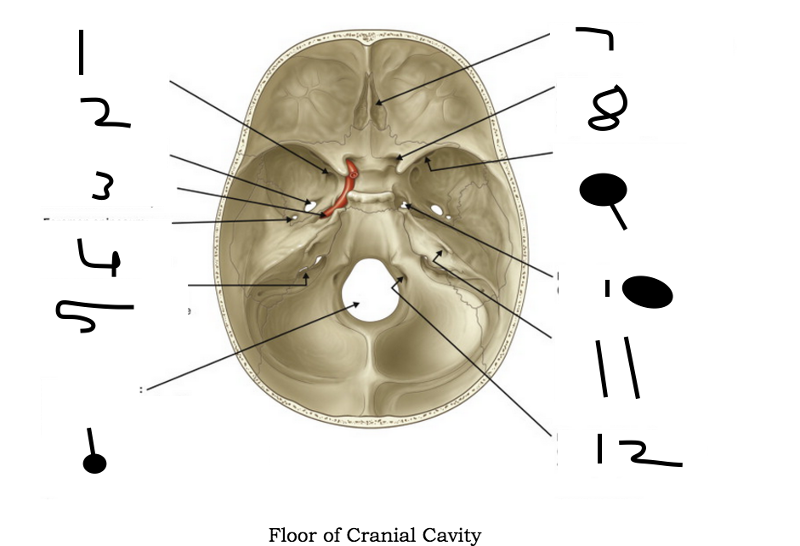 label the foramen and what passes through them | back 72 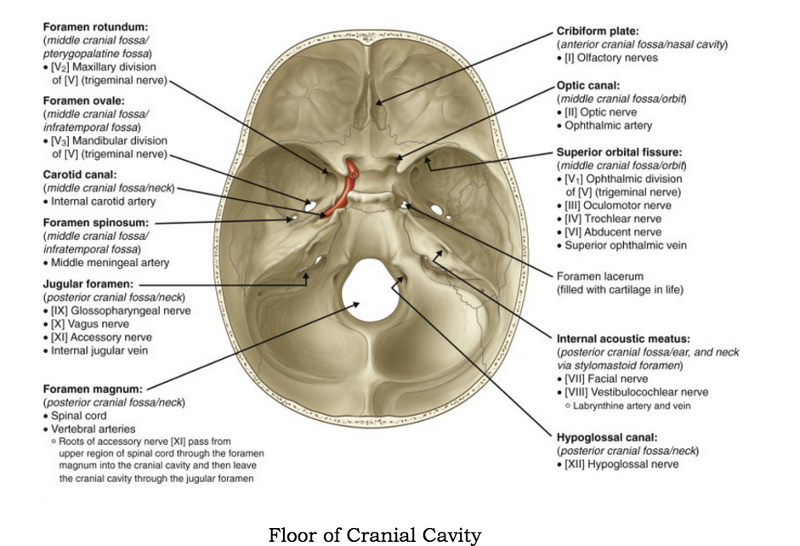 |
front 73 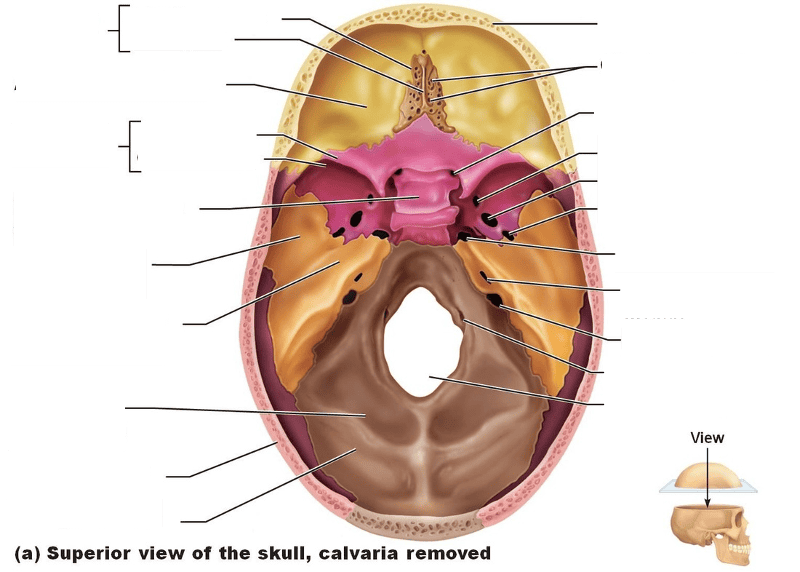 label the structures | back 73 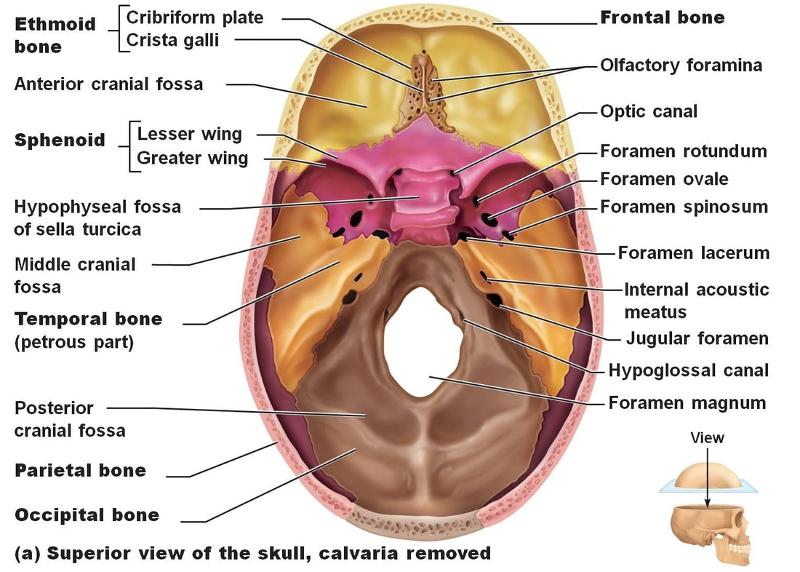 |
front 74 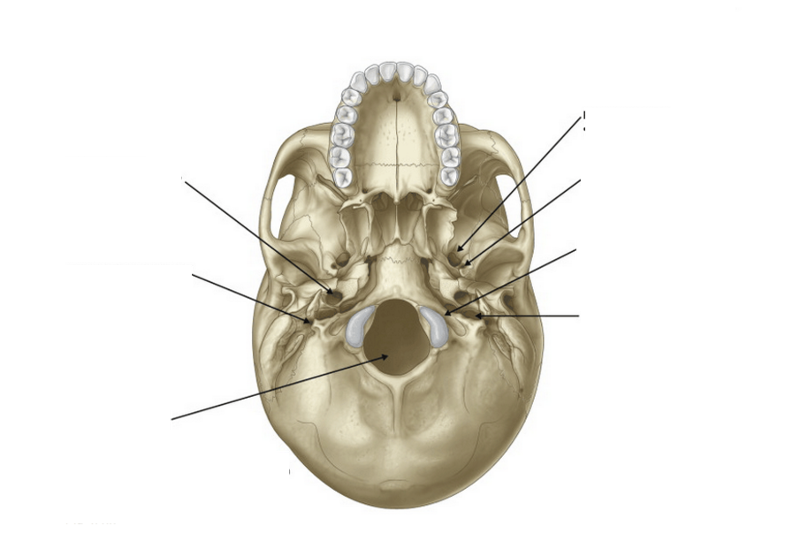 label foramen and list what passes through | back 74 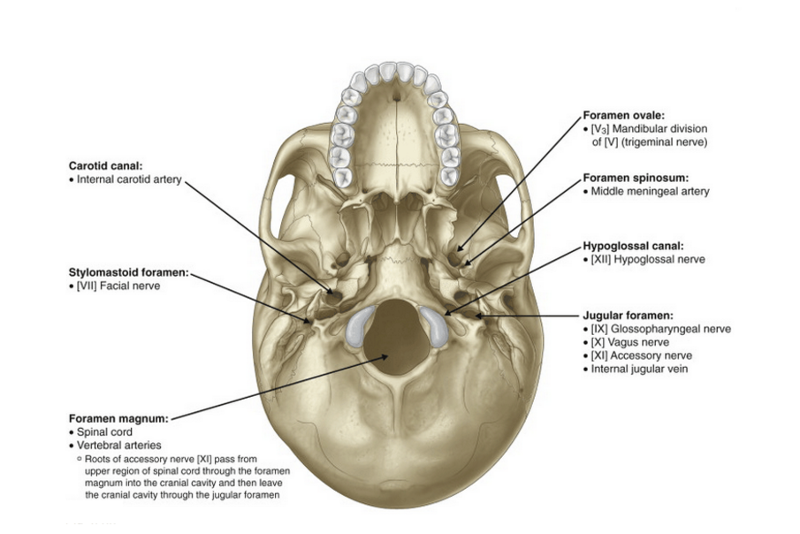 |
front 75  label | back 75 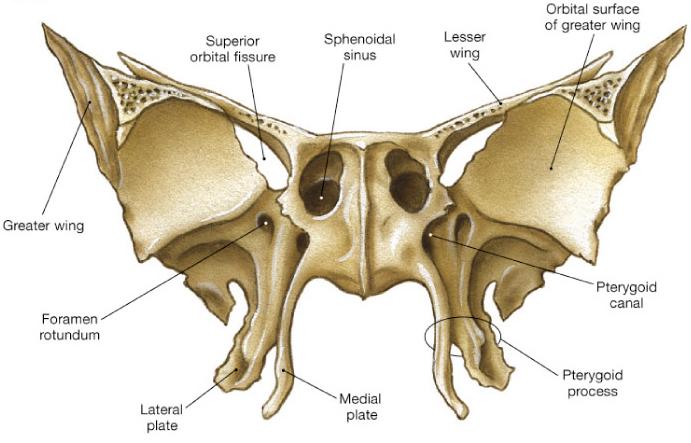 |
front 76  label | back 76 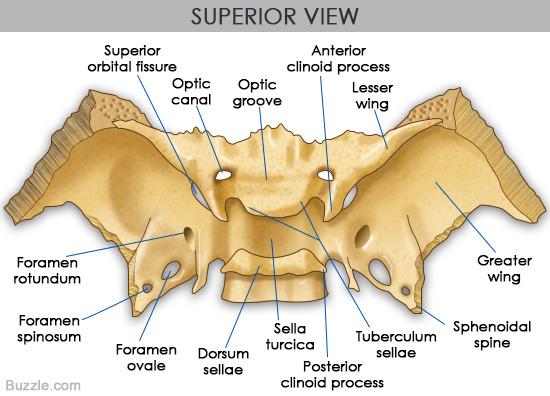 |
front 77 which foramen are associated with the sphenoid bone? | back 77 ovale, spinosum, rotundum, |
front 78 which parts of the brain sit in the middle cranial fossa? | back 78 left and right temporal lobes |
front 79 what part of the brain is found in the anterior cranial fossa? | back 79 frontal lobe |
front 80 what parts of the brain are found in the posterior cranial fossa? | back 80 cerebellum and brainstem |
front 81 which foramen are associated with the ethmoid bone? | back 81 the cribiform foramina the ethmoid bone |
front 82 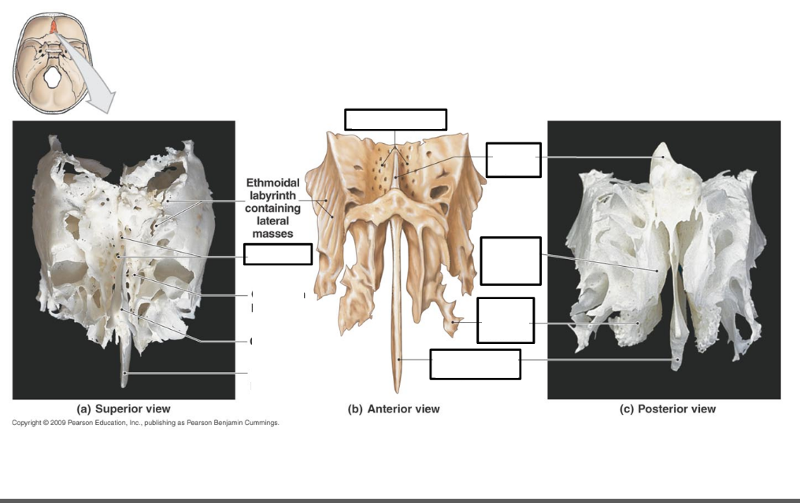 label | back 82 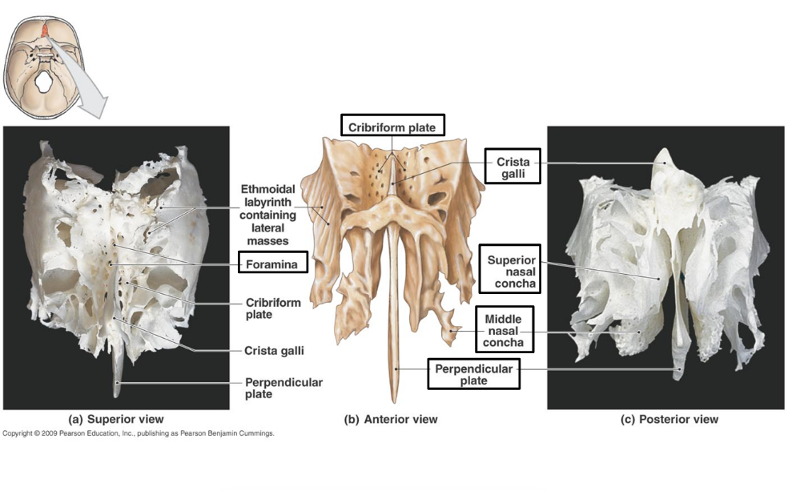 |
front 83 perpendicular plate participates in the formation of _________ | back 83 the nasal septum |
front 84 what bones form the anterior cranial fossa? | back 84 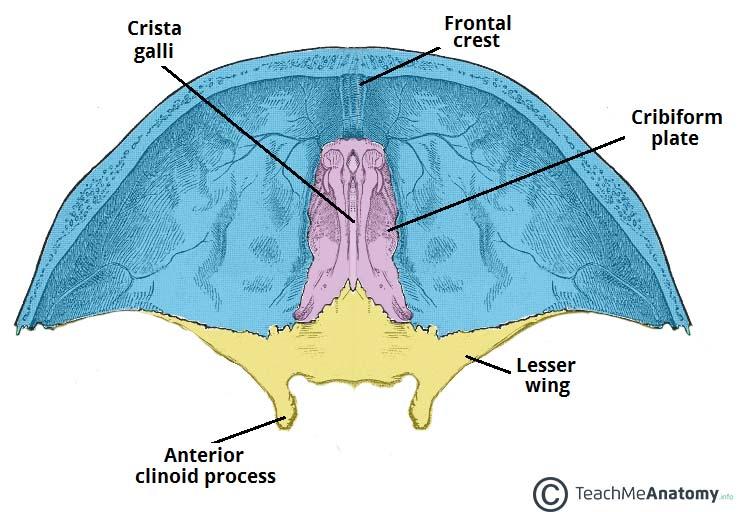 mostly frontal bone, some ethmoid and the lesser wing of sphenoid |
front 85 what bones form the middle cranial fossa? | back 85 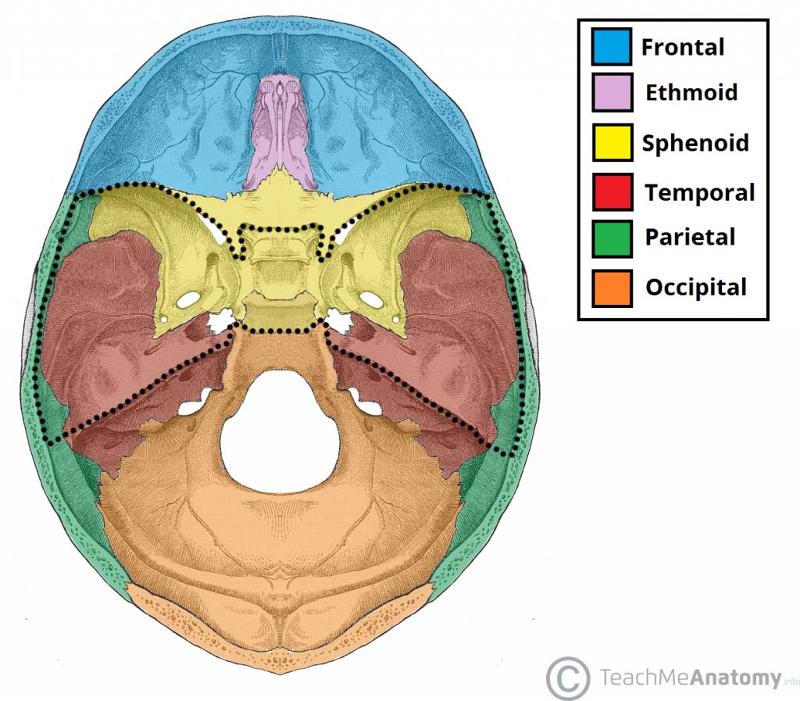 greater wing of sphenoid bone, parietal bone, and half of temporal bone |
front 86 what bones form the posterior cranial fossa? | back 86 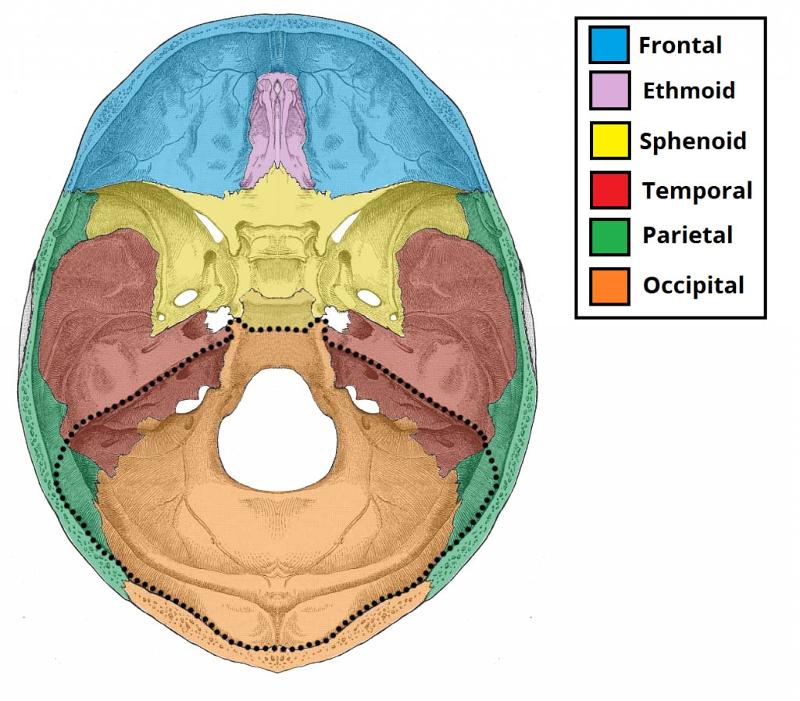 occipital bone, half of temporal bone, and some parietal |
front 87 what are the paired and unpaired bones of the face? | back 87 paired: nasal maxillae lacrimal zygomatic palatine inferior nasal concha UNPAIRED: vomer mandible |
front 88 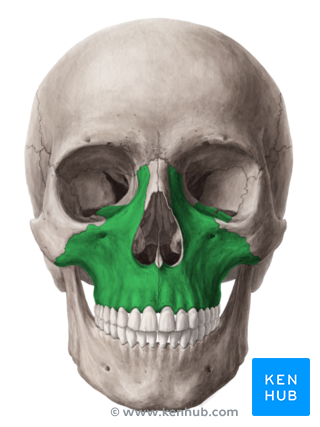 what is this? | back 88 maxillary bones |
front 89 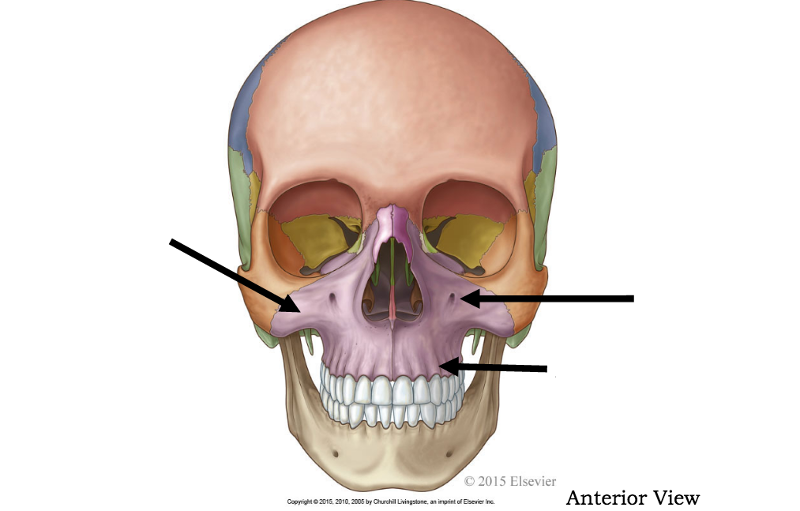 label features of the maxillary bones | back 89 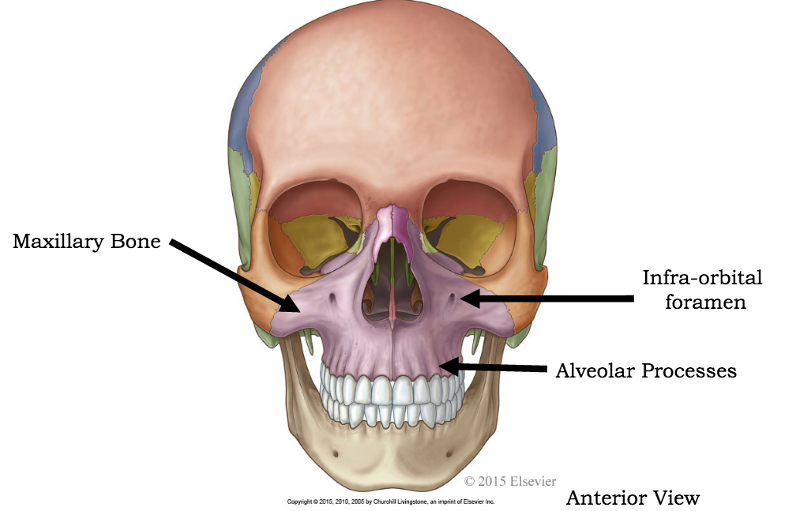 |
front 90 what passes through the infraorbital foramen? | back 90 infraorbital nerve (small sensory branch of V2, maxillary division of trigeminal nerve) infraorbital artery infraorbital vein |
front 91 what forms the hard palate? | back 91 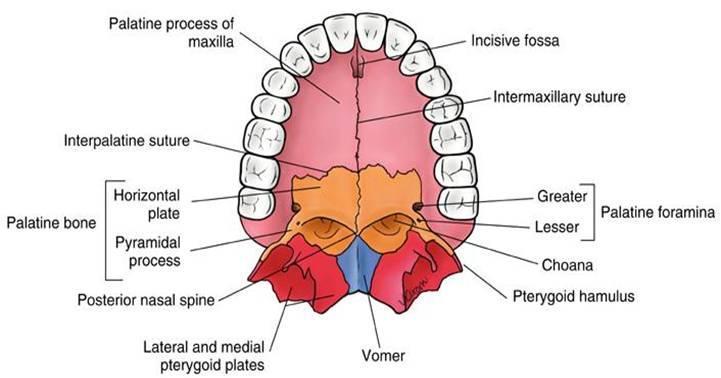 palatine process of the maxilla and horizontal plates of the palatine bones |
front 92 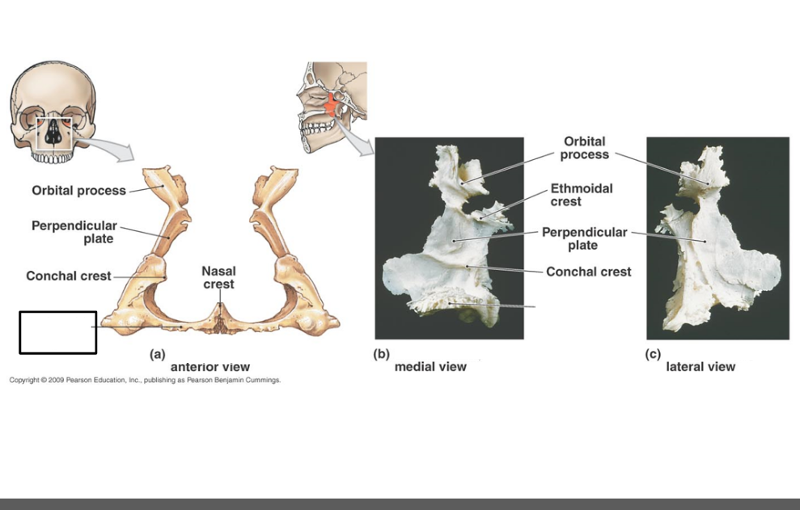 | back 92 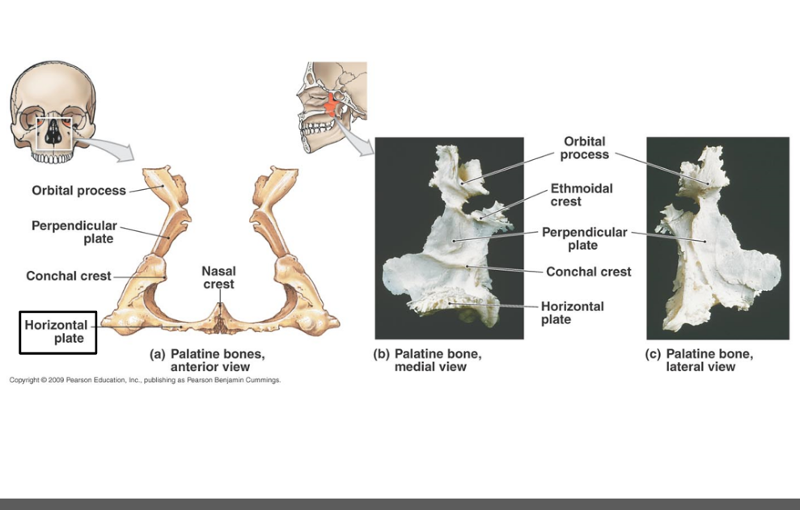 |
front 93 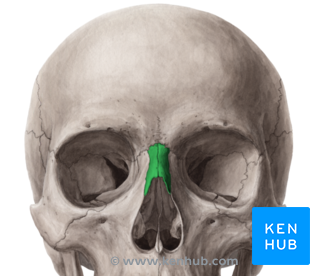 what is the bone in green? | back 93 nasal bone |
front 94 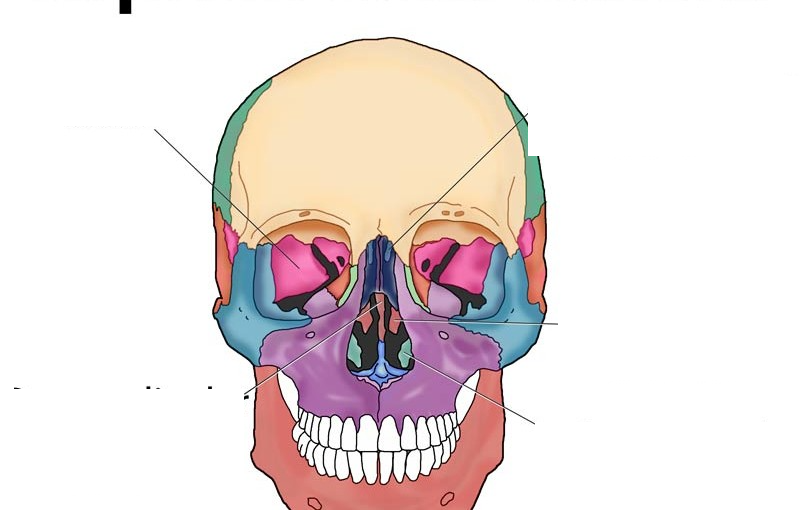 label | back 94 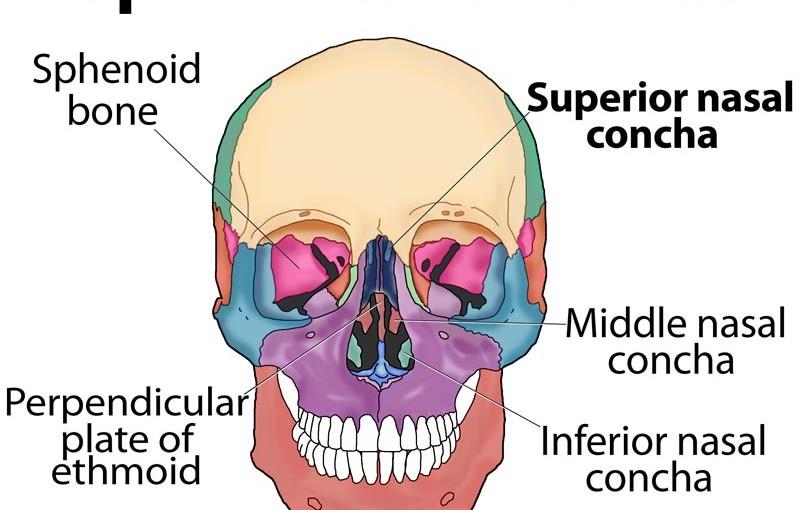 |
front 95 name the bones of the bony orbit | back 95 frontal, lacrimal, ethmoid, zygomatic, maxilla, palatine, sphenoid |
front 96 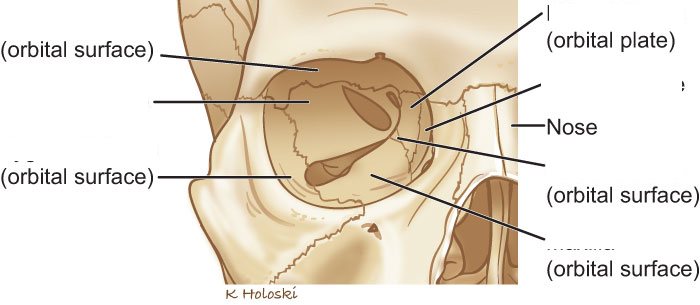 label bones of bony orbit | back 96 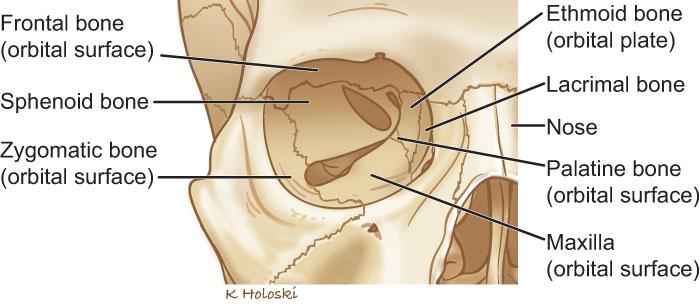 |
front 97 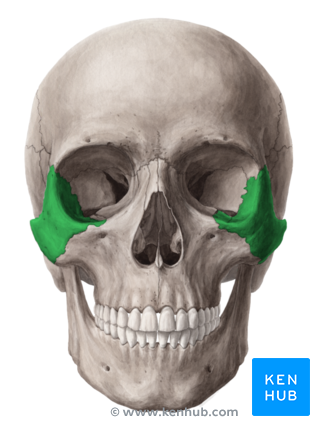 what is this bone? | back 97 zygomatic |
front 98 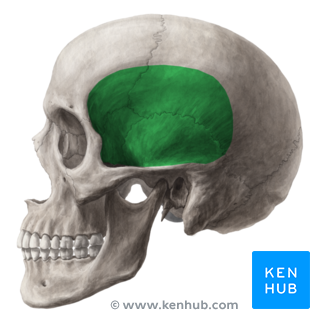 what is this area called? which muscle sits here? | back 98 temporal fossa; temporalis muscle |
front 99 what area is inferior and deep to zygomatic arch? many arteries and nerves pass through here | back 99 infratemporal fossa |
front 100 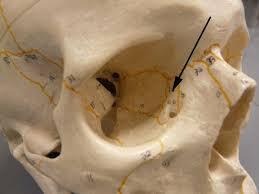 what is this bone? which gland is found superior and lateral? | back 100 lacrimal bone; lacrimal gland |
front 101 which bones form outer rim, lateral to medial of the bony orbit? which bones form inner part of bony orbit? | back 101 front, zygomatic, maxillary, sphenoid ethmoid lacrimal palatine |
front 102 which bone forms inferior portion of the nasal septum? | back 102 vomer |
front 103  name this bone | back 103 vomer |
front 104 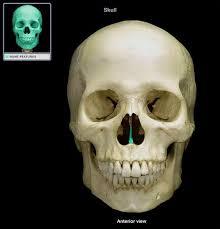 name this bone | back 104 vomer |
front 105 what is the nasal septum composed of? | back 105 perpendicular plate of the ethmoid bone, vomer bone, and septal cartilage |
front 106 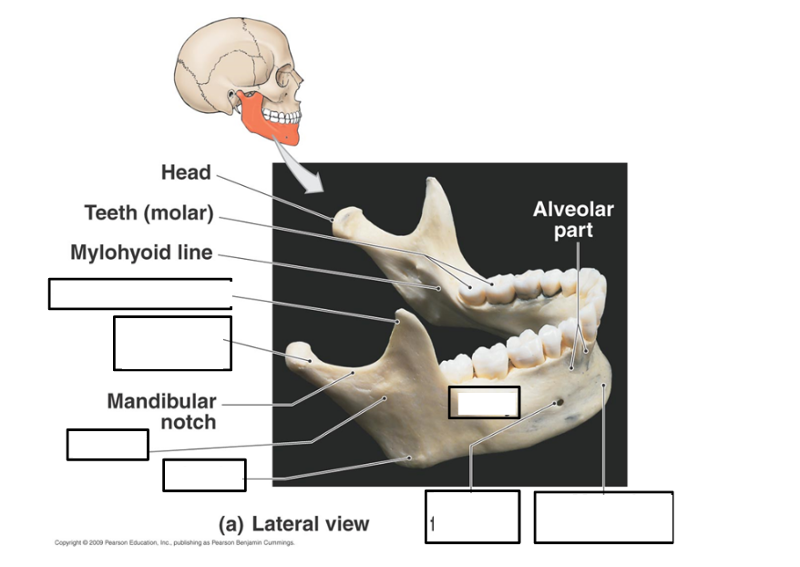 label | back 106 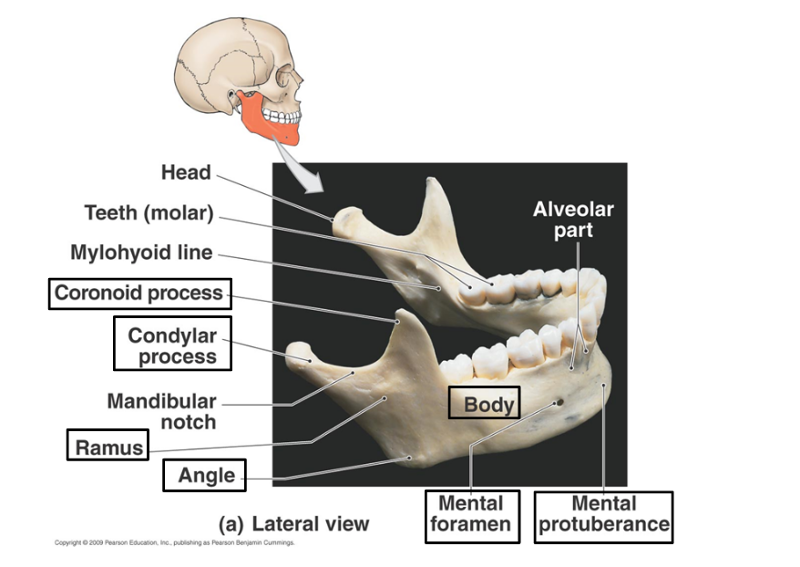 |
front 107 what passes through the mental foramen? | back 107 mental nerve, division of V3 (mandibular division) of trigeminal nerve |
front 108 where is the genoid tubercle? what is on the genoid tubercle? | back 108 on the inner side of the mandible, behind mental protuberance. muscles of the tongue insert here. |
front 109 which nerve supplies lower teeth with sensation? | back 109 inferior alveolar nerve, division of mandibular nerve (v3) |
front 110 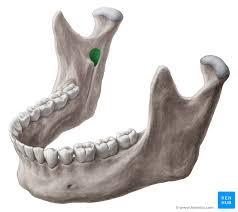 what is this? | back 110 mandibular foramen |
front 111 describe pathway of inferior alveolar nerve | back 111 branches from the mandibular nerve and runs through mandibular foramen. exits through mental foramen as mental nerve |
front 112 soft fibrous areas where several sutures unite | back 112 fontanelles |
front 113 name the four fontanelles of the infant | back 113 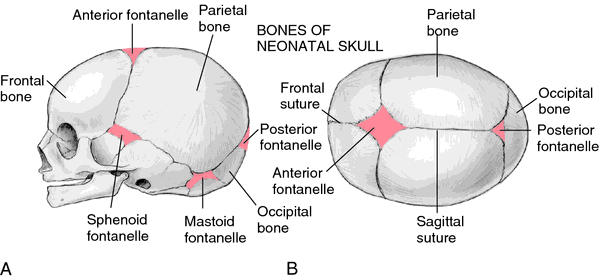 anterior fontanelle posterior fontanelle mastoid fontanelle (2) sphenoid fontanelle (2) |
front 114 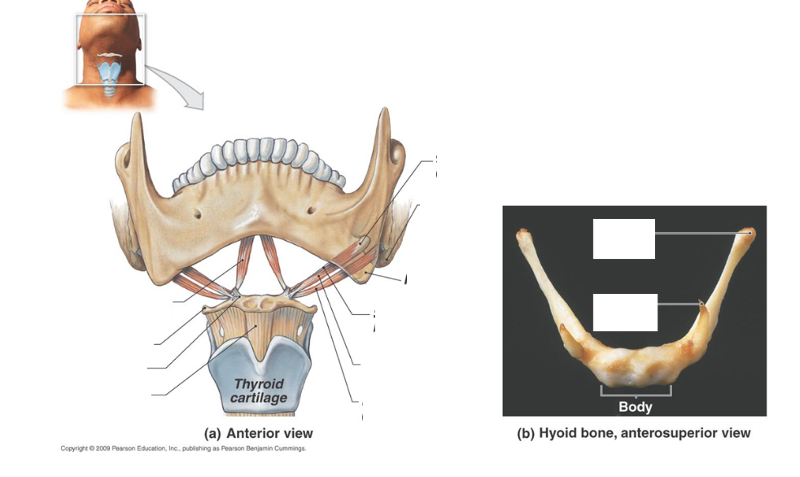 label | back 114 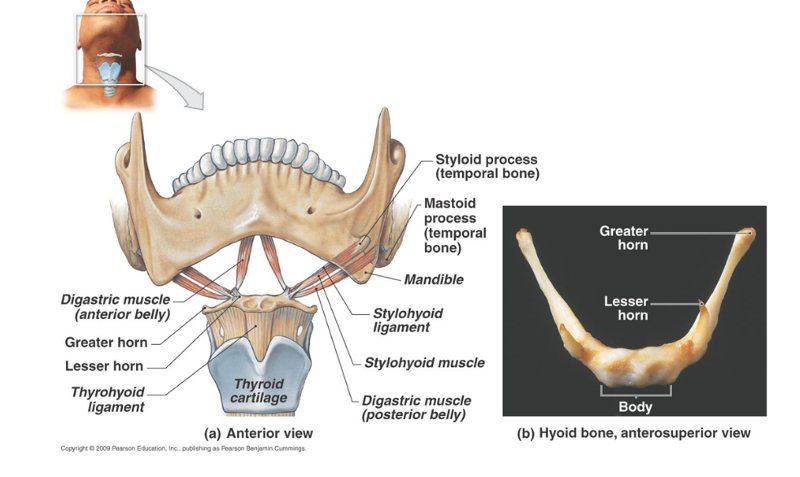 |
front 115 which foramen are located on the sphenoid? | back 115 superior orbital fissure optic canal rotundum ovale spinosum |
front 116 on which bone is foramen lacerum located? | back 116 between the sphenoid, temporal and occipital bones |
front 117 what forms the superior portion of the nasal septum? | back 117 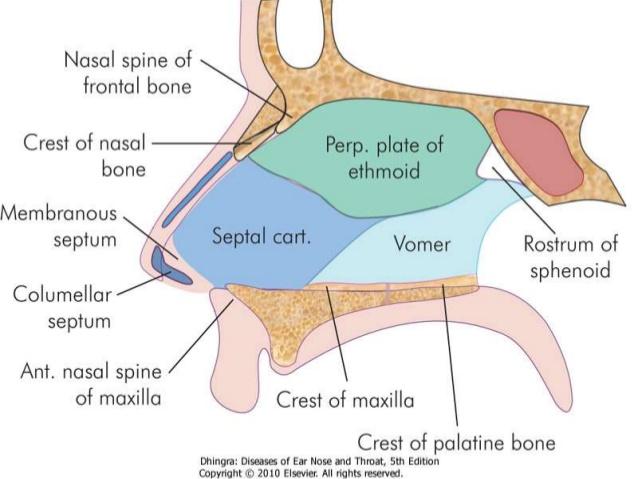 perpendicular plate of the ethmoid bone |
front 118 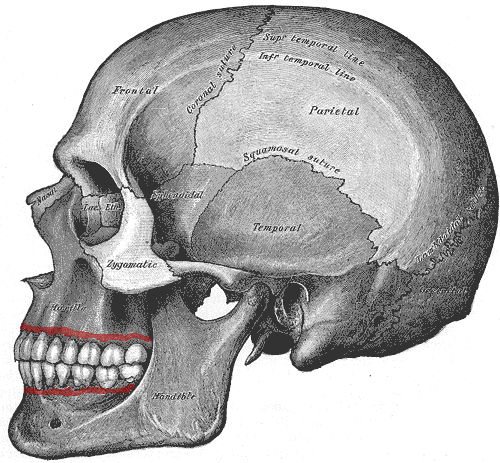 what is highlighted in red? | back 118 alveolar processes |
front 119 what does mental nerve supply with sensation? | back 119 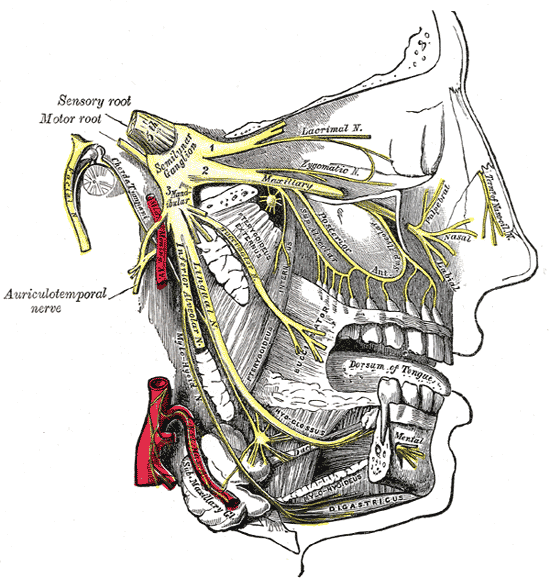 front of chin and lower lip |
front 120 which holes are associated with temporal bone? | back 120 external acoustic meatus, carotid canal, and stylomastoid foramen |
front 121 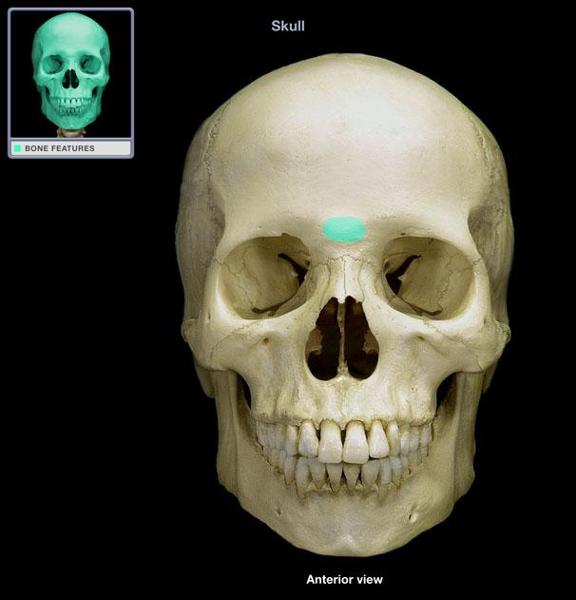 identify | back 121 glabella |
front 122 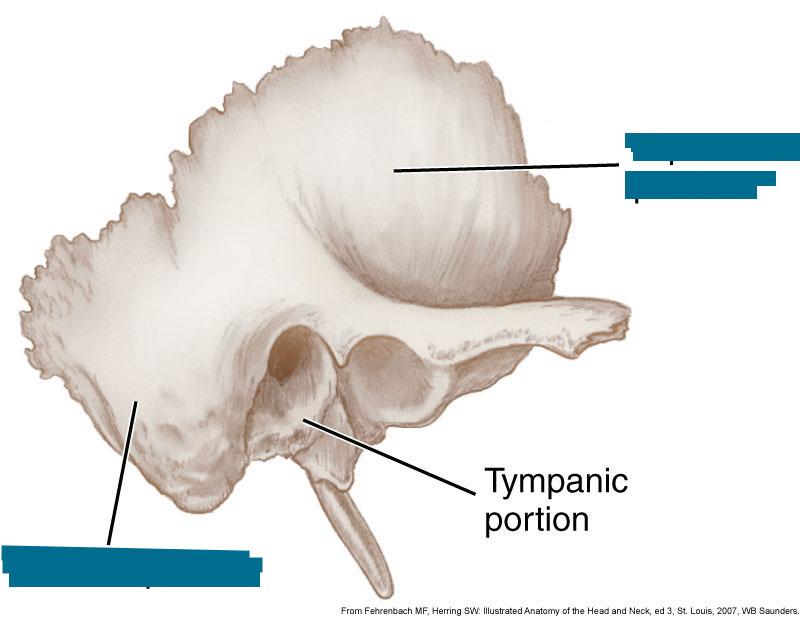 identify | back 122 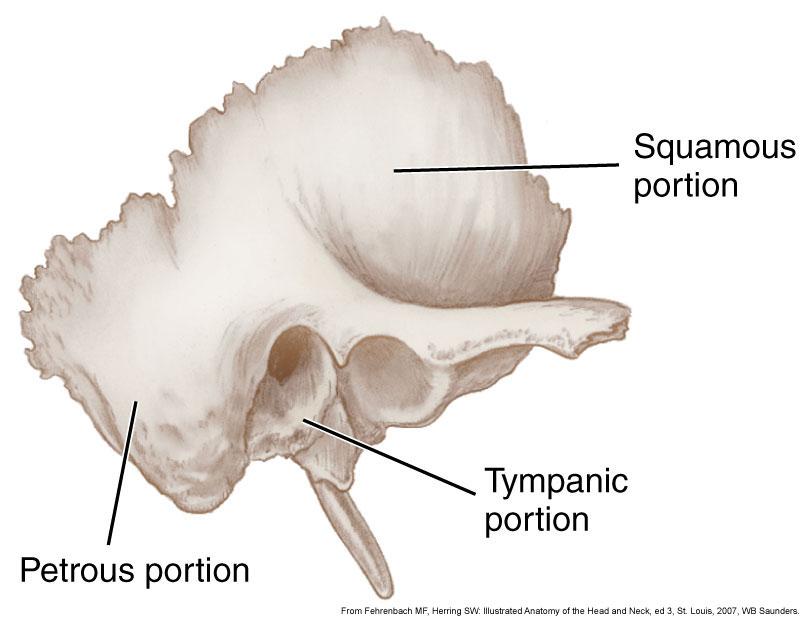 |
front 123 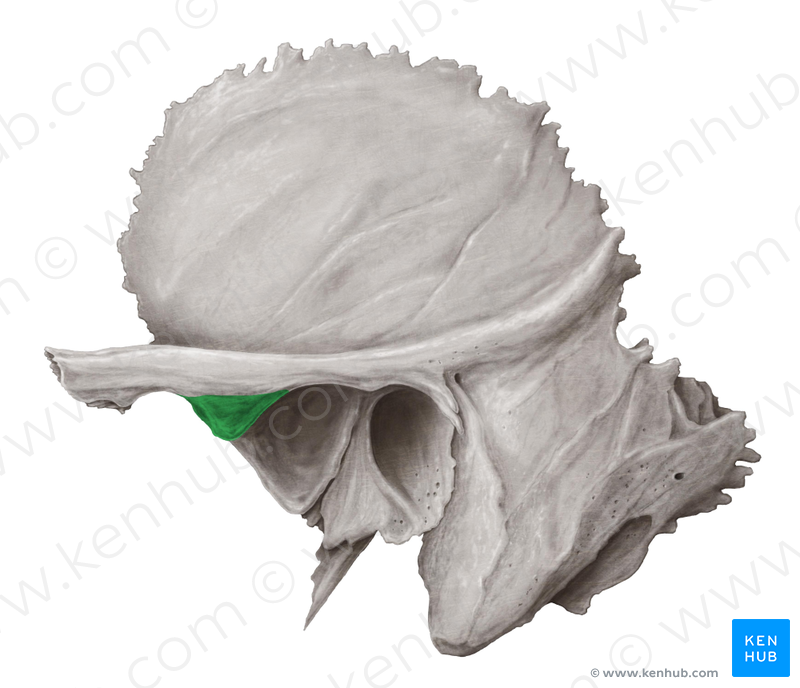 | back 123 articular tubercle |
front 124 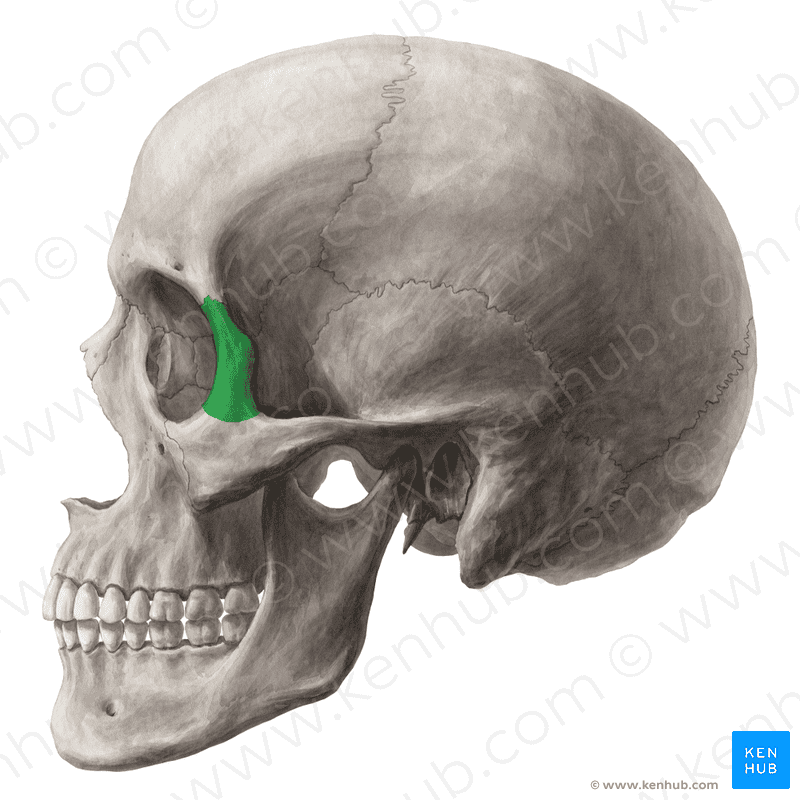 identify | back 124 frontal process of zygomatic bone |
front 125 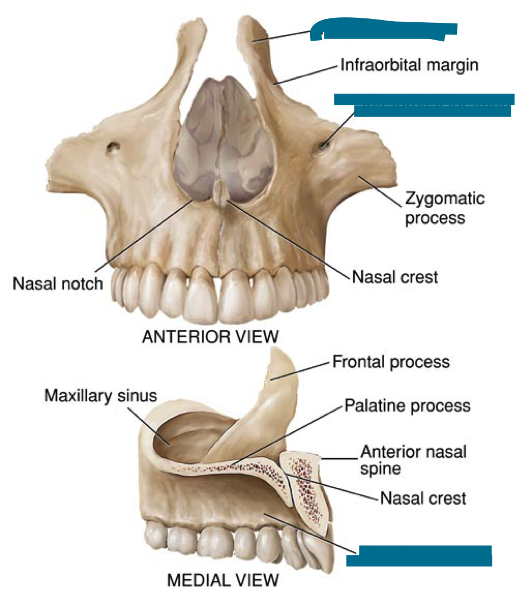 identify blacked out structures | back 125 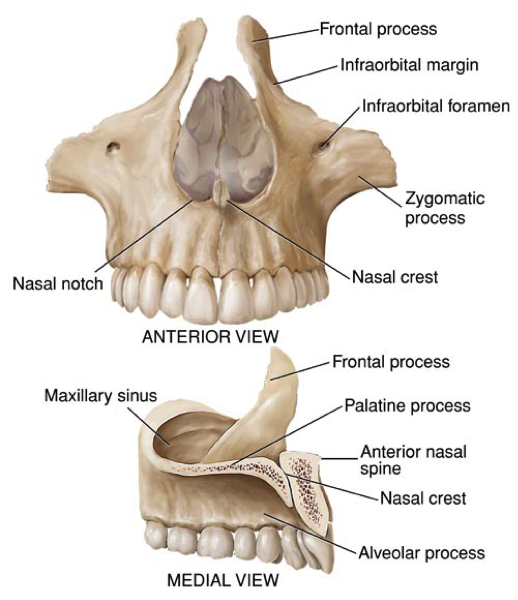 |
front 126 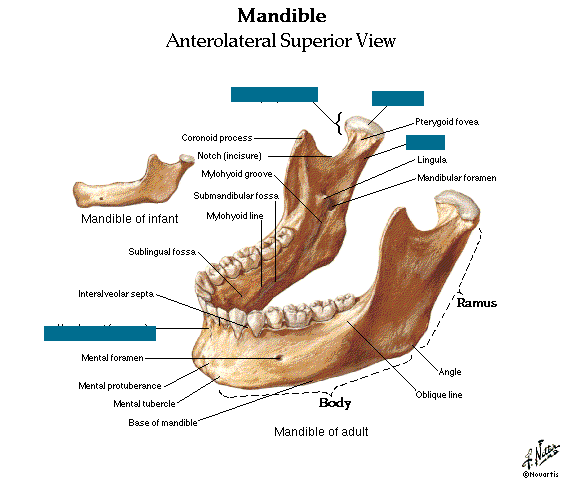 | back 126 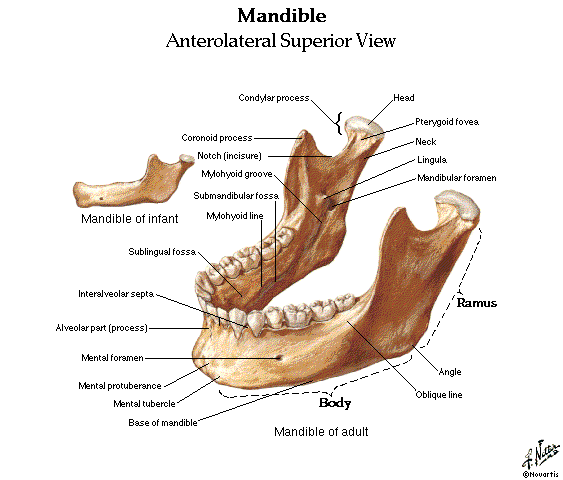 |
front 127 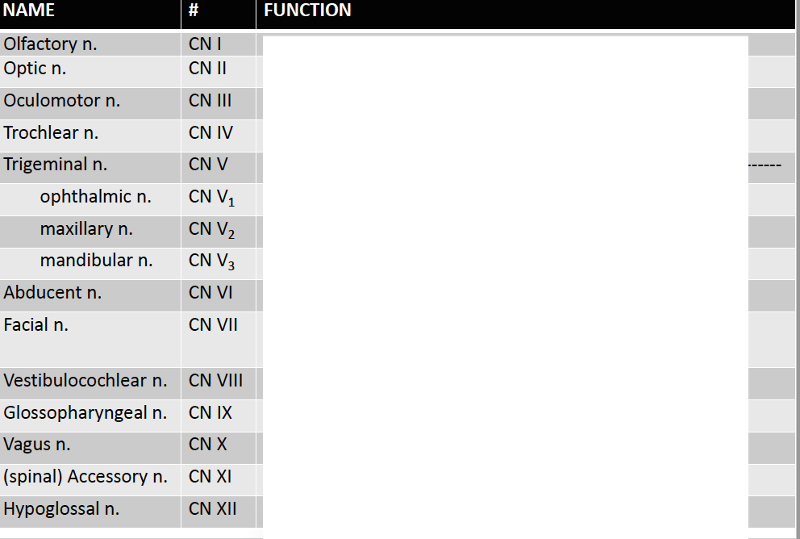 | back 127  |